We have explored the generation of text and also images in two previous articles; in this one, we explore the image generation capabilities of DALL-E 3. As of November 2023, in my tests DALL-E 3 produces images that are much more sophisticated and nicer than other tools, including DALL-E 2 and Deep AI. (I haven’t tried Midjourney because it requires a paid subscription, although its images look quite impressive.)
We start by using the OpenAI API directly.
from IPython.display import HTML, Markdown
import openai
from pathlib import Path
import pickle
import requests
import wikipedia
ChatGPT requires a paid subscription; the secret key is stored in a file.
secret_key = Path('./secret-key.txt').open('r').read()
openai.api_key = secret_key
The API is very easy to use: call openai.Image.create() with a given prompt. We need to specify the model and the size; we start with DALL-E 2 to better appreciate what an improvement DALL-E 3 is. The response contains the URL of the image do download.
prompt_text = "envision a chessboard, liquid metal and crystal, on a table in a futuristic scenario"
response = openai.Image.create(
model="dall-e-2",
prompt=prompt_text,
n=1,
size="1024x1024"
)
assert len(response['data']) == 1
url = response['data'][0]['url']
filename = 'chess-2.png'
img_data = requests.get(url).content
with open(filename, 'wb') as f:
f.write(img_data)
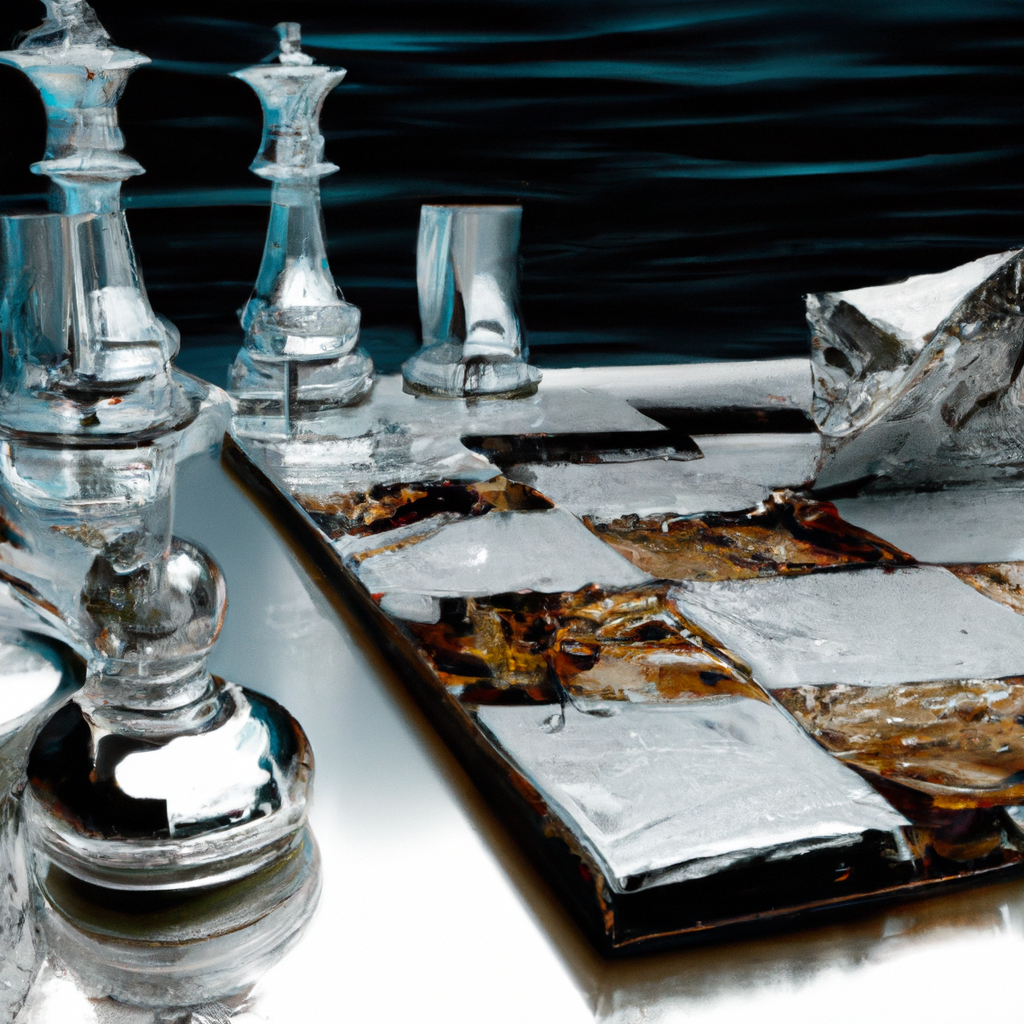
response = openai.Image.create(
model="dall-e-3",
prompt=prompt_text,
n=1,
size="1024x1024"
)
assert len(response['data']) == 1
revised_prompt = response['data'][0]['revised_prompt']
url = response['data'][0]['url']
filename = 'chess-3.png'
img_data = requests.get(url).content
with open(filename, 'wb') as f:
f.write(img_data)
display(HTML("<b>Revised prompt</b>:<br><br>"+ revised_prompt))
Revised prompt:
Imagine a futuristic scene where a chessboard made of liquid metal and crystal pieces is situated on a sleek, modern table. The entire setting should look advanced and ahead of its time, with elements such as holographic screens and neon lights in the background. The liquid metal should appear as if it’s in constant flux, reshaping itself, while the crystal pieces brilliantly reflect the ambient lighting. The atmosphere is charged with anticipation, as if a strategic battle of wits is about to take place on this unique, dynamic chessboard.

For the remainder of this article we have used BingChat to generate the images. Looking at the web, I came up with a long list of artistic styles; for each of them, the prompt is
Prompt: a picture of a window with mountains and sunset, style is #style
This prompt was selected after some experiments: being quite general and a common subject for pictures and photigraphs, it produces good results for each style, while other prompts were found to generate inconclusive or misleading images for some styles. The approach is the following: on the Bing, the prompt above was used to generate several pictures; a screenshot of the results was taken and saved to a PNG file. Then, we load all such files and for each of them we ask ChatGPT, through the Python API, to provide a short description of the style itself. Finally, an HTML text with the description and the image is produced and displayed.
We use ChatGPT 4; the temperature is zero because we want precise results, not creativity.
def get_completion(prompt, model="gpt-4", temperature=0):
messages = [{"role": "user", "content": prompt}]
response = openai.ChatCompletion.create(
model=model,
messages=messages,
temperature=temperature,
)
return response.choices[0].message["content"]
images = [f.stem for f in Path('.').glob('*.png')]
styles = [i.replace('-', ' ') for i in images]
def get_description(style):
prompt = f"""
Write a short description of the figurative style {style}. Use about 200 words.
Format the result as plain text. Report the period of interest and the most important
people.
"""
return get_completion(style)
Since each query can taken 10 to 30 seconds and we need to paid for them, results are cached in a pickle file. This makes adding a new style easy and quick.
descriptions_file = Path('./descriptions.pickle')
if descriptions_file.exists():
with open(descriptions_file, 'rb') as f:
descriptions = pickle.load(f)
else:
descriptions = {}
modified = False
for style in styles:
if style not in descriptions:
descriptions[style] = get_description(style)
modified = True
if modified:
with open(descriptions_file, 'wb') as f:
pickle.dump(descriptions, f)
The HTML itself is quite basic; we use a purple color to identify the text produced by ChatGPT. Not all prompts are correct descriptions on the style, but overall they are quite good.
html = ""
for style, image in zip(styles, images):
description = descriptions[style]
html += f"""
<hr>
<h4>{style.title()}</h4>
<p style="font-family: Verdana, sans-serif; color: #880E4F">{description}</p>
<br>
<img src='{image}.png' width=600 />
"""
And this is the result: quite a lot to read and a nice introduction to many artistic styles.
display(HTML(html))
Abstract Expressionism
Abstract Expressionism is an art movement that emerged in the United States after World War II during the 1940s and 1950s. It is known for its emphasis on spontaneous, automatic, or subconscious creation. The movement is often characterized by gestural brush-strokes or mark-making, and the impression of spontaneity. The artists involved in this movement placed emphasis on the physical act of painting, often using large canvases and involving their whole body in the process. They believed that the process of creating art was just as important, if not more so, than the final product. Abstract Expressionism is often divided into two groups: Action Painting (including artists like Jackson Pollock and Willem de Kooning) which focused on the physical action of painting, and Color Field Painting (including artists like Mark Rothko and Barnett Newman) which was more concerned with exploring the effects of pure color on a canvas. The movement was the first to put New York City at the forefront of the art world, a status previously held by Paris. Abstract Expressionism is considered a pivotal moment in the shift of the cultural center of the art world from Paris to New York.
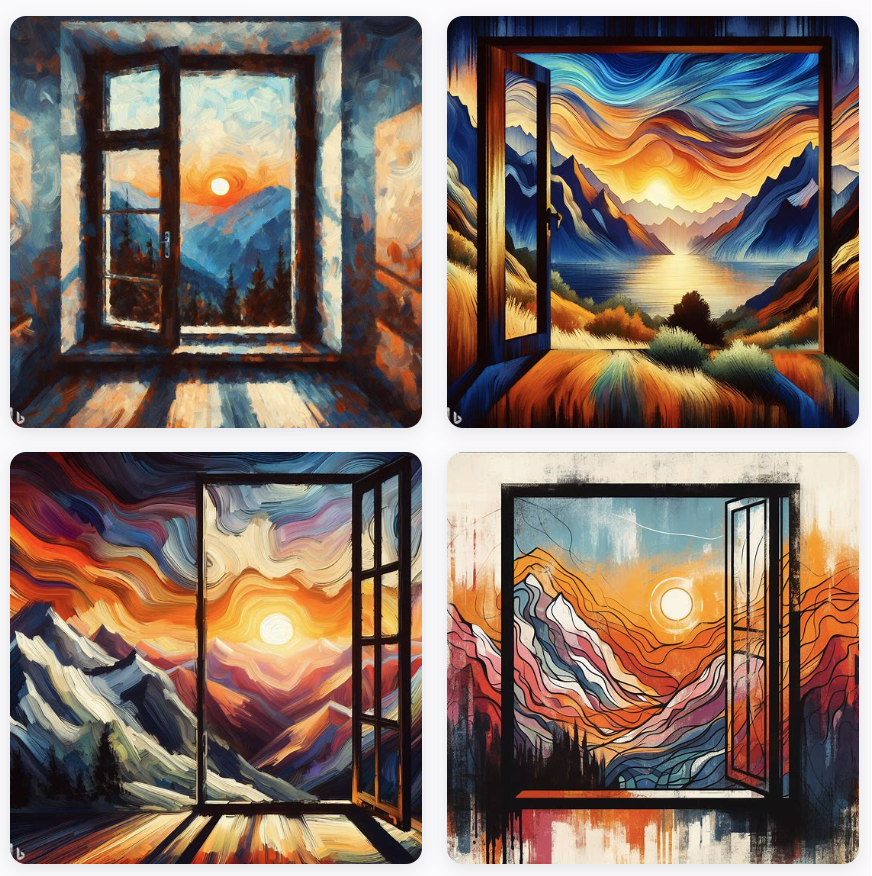
American Realism
American Realism is a style of art and literature that emerged in the United States in the late 19th and early 20th centuries. It is characterized by its focus on everyday life, ordinary people, and the social issues of the time. In literature, American Realism was a response to the romanticism and transcendentalism of the earlier 19th century. It rejected the idealized, symbolic, and supernatural elements of these movements, instead favoring detailed, accurate descriptions of the real world. Notable authors in this genre include Mark Twain, Henry James, and Edith Wharton. In art, American Realism is often associated with the Ashcan School, a group of artists who sought to depict the gritty reality of urban life. They painted scenes of crowded city streets, tenement houses, and the working class. Notable artists in this movement include Robert Henri, George Bellows, and Edward Hopper. American Realism also extended to theater, with playwrights like Eugene O'Neill and Arthur Miller focusing on the struggles and conflicts of ordinary people. Overall, American Realism sought to portray life as it truly was, without romanticizing or idealizing it. It was a reflection of the social, political, and economic changes happening in the United States at the time.
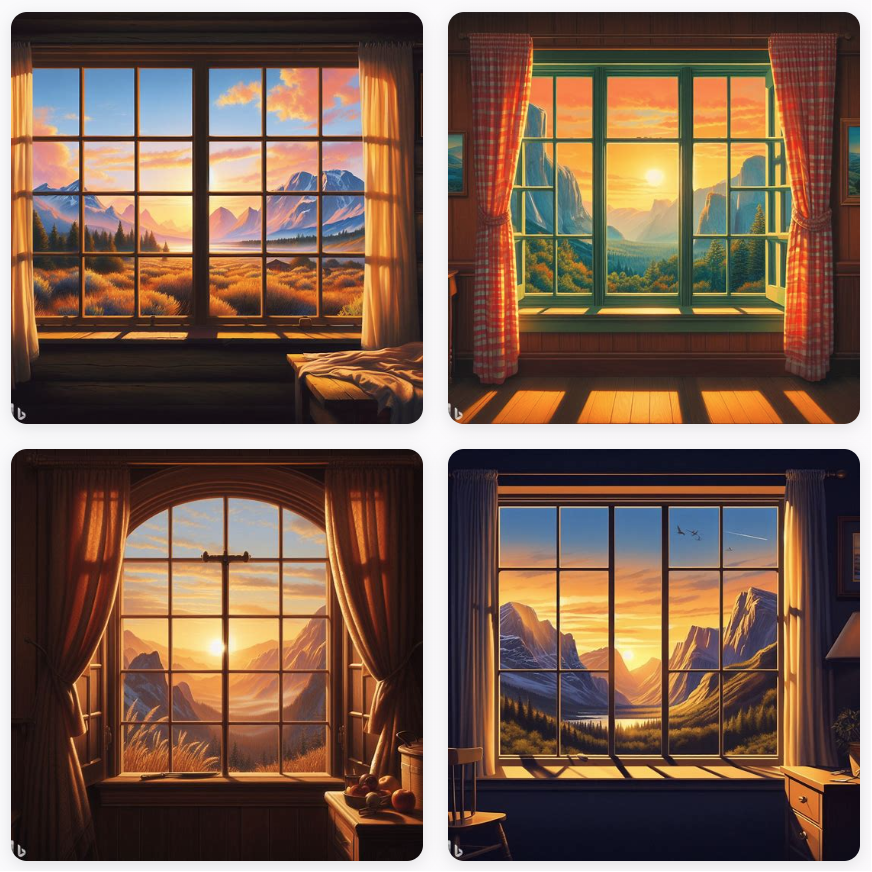
Ancient Egypt Fourth Millenium
The fourth millennium BC in Ancient Egypt is generally recognized as the period when the civilization really began to take shape. This period, also known as the Predynastic period, saw the development of many of the institutions, practices, and cultural elements that would characterize Ancient Egyptian civilization for the next three millennia. During this time, the Egyptians began to develop a system of writing, known as hieroglyphics, and they also began to build monumental structures, including the famous pyramids. The society was becoming increasingly complex, with a growing division of labor and the emergence of a ruling class. The fourth millennium BC also saw the unification of Upper and Lower Egypt into a single kingdom, traditionally attributed to the pharaoh Narmer. This event, which took place around 3100 BC, marked the beginning of the Pharaonic period of Egyptian history. The fourth millennium BC was also a time of significant technological advancement. The Egyptians developed advanced techniques for agriculture, pottery, and metalworking, among other things. They also began to use the Nile River for transportation and trade, which greatly increased their economic power and influence. Overall, the fourth millennium BC was a time of great change and development in Ancient Egypt, setting the stage for the civilization's golden age in the centuries to come.
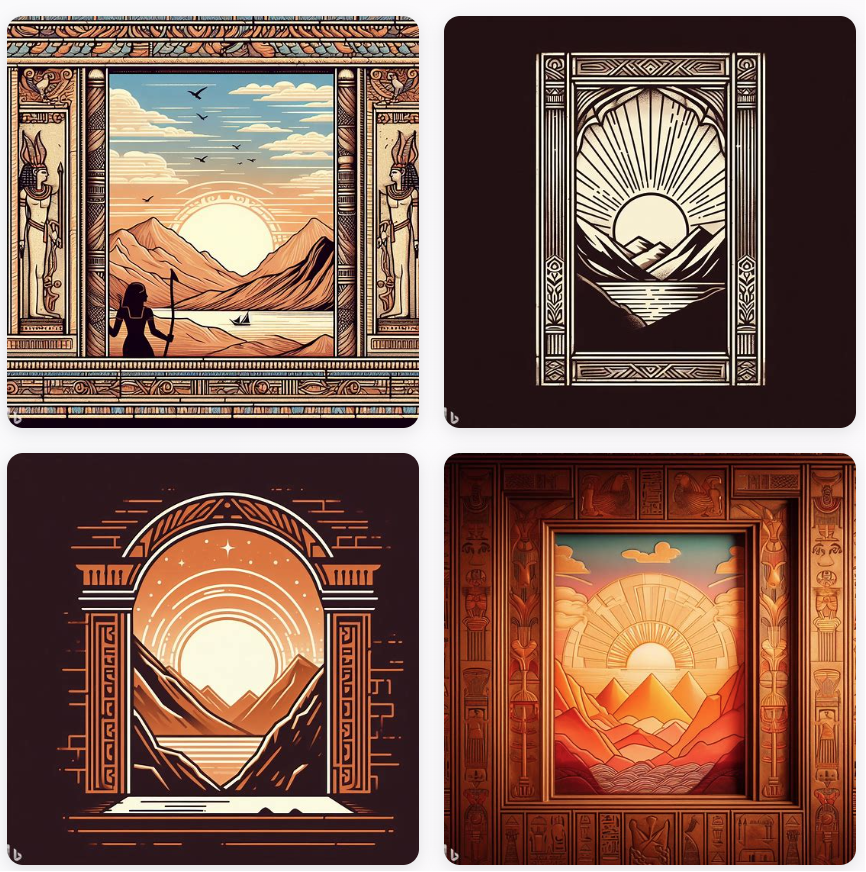
Ancient Egypt Second Millenium
The second millennium BC in Ancient Egypt spans the period from 2000 BC to 1001 BC, covering the end of the Old Kingdom and the First Intermediate Period, the Middle Kingdom, and the beginning of the Second Intermediate Period. 1. End of the Old Kingdom and the First Intermediate Period (2181–2055 BC): This period was marked by political instability and decline in centralized power. The Old Kingdom collapsed under the weight of economic hardship, internal strife, and invasion from foreign lands. 2. Middle Kingdom (2055–1650 BC): This period is often considered the high point of Ancient Egyptian culture. The Middle Kingdom was marked by a resurgence in centralized power, a flourishing of the arts, and advances in architecture, literature, and agriculture. The Pharaohs of this period were known for their benevolence and concern for the people. 3. Beginning of the Second Intermediate Period (1650–1550 BC): This period was marked by the invasion of the Hyksos, a foreign people from the Near East. The Hyksos established their own dynasty and ruled over the northern part of Egypt, while native Egyptian rulers maintained control over the southern part. Throughout the second millennium BC, Ancient Egypt experienced periods of prosperity and decline, but it remained one of the most advanced civilizations of the ancient world.
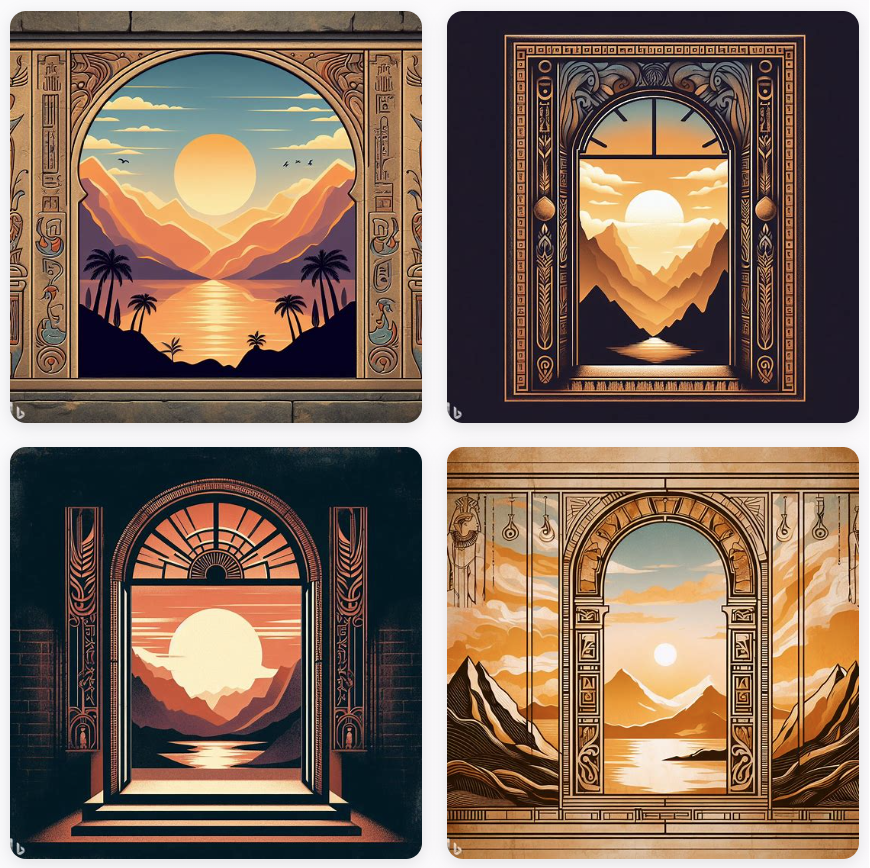
Ancient Egypt Third Millenium
The third millennium BC in Ancient Egypt spans the Early Bronze Age from around 3100 BC to 2000 BC. This period is marked by significant advancements in Egyptian civilization across various aspects such as culture, technology, religion, and politics. 1. Early Dynastic Period (3100-2686 BC): This period saw the unification of Upper and Lower Egypt under the first Pharaoh, Narmer. The hieroglyphic script was developed during this time, and there was significant architectural development, including the construction of the first royal tombs. 2. Old Kingdom (2686-2181 BC): Also known as the "Age of the Pyramids," this period is marked by the construction of the Great Pyramids of Giza. The Pharaohs during this time were considered gods, and there was a strong central government. The sun god Ra was worshipped extensively. 3. First Intermediate Period (2181-2055 BC): This period was marked by political instability and decentralization of power. There was a decline in the Pharaoh's authority, leading to civil wars and chaos. 4. Middle Kingdom (2055-1650 BC): This period saw the reunification of Egypt and a resurgence in art, literature, and architecture. The Pharaohs of this period were considered shepherds of their people rather than gods. Throughout the third millennium BC, Ancient Egypt made significant advancements in irrigation, farming, and construction techniques. The civilization also developed a complex religious system, a form of government, and a written language, which were all crucial to its growth and development.
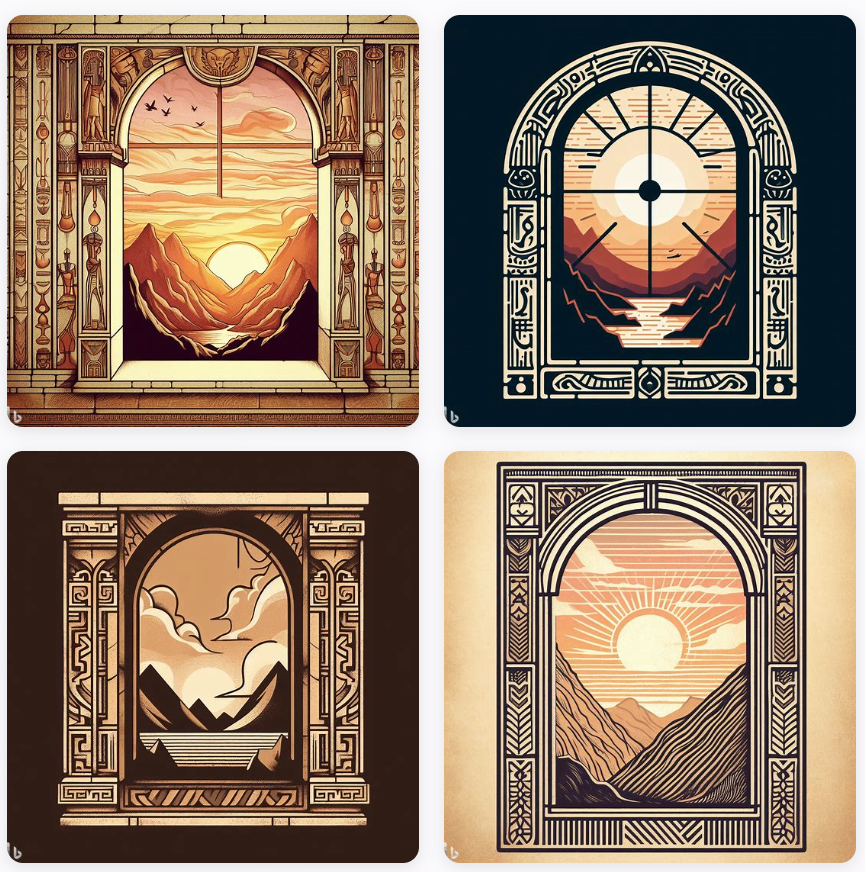
Ancient Greek
Ancient Greek refers to the Greek language as it existed from the 9th or 8th century BCE to around the 6th century CE. It is often divided into the Archaic period (9th to 6th centuries BCE), Classical period (5th and 4th centuries BCE), and Hellenistic period (3rd century BCE to 6th century CE). Ancient Greek is also used to describe the civilization and culture of Greece during these periods. This includes the philosophy, literature, art, politics, and science of the time. Some of the most famous figures from this era include philosophers like Socrates, Plato, and Aristotle, playwrights like Sophocles and Euripides, and historians like Herodotus and Thucydides. The Ancient Greeks are often credited with laying the groundwork for Western civilization. Their contributions to philosophy, politics (including the concept of democracy), and science continue to influence modern thought and society.
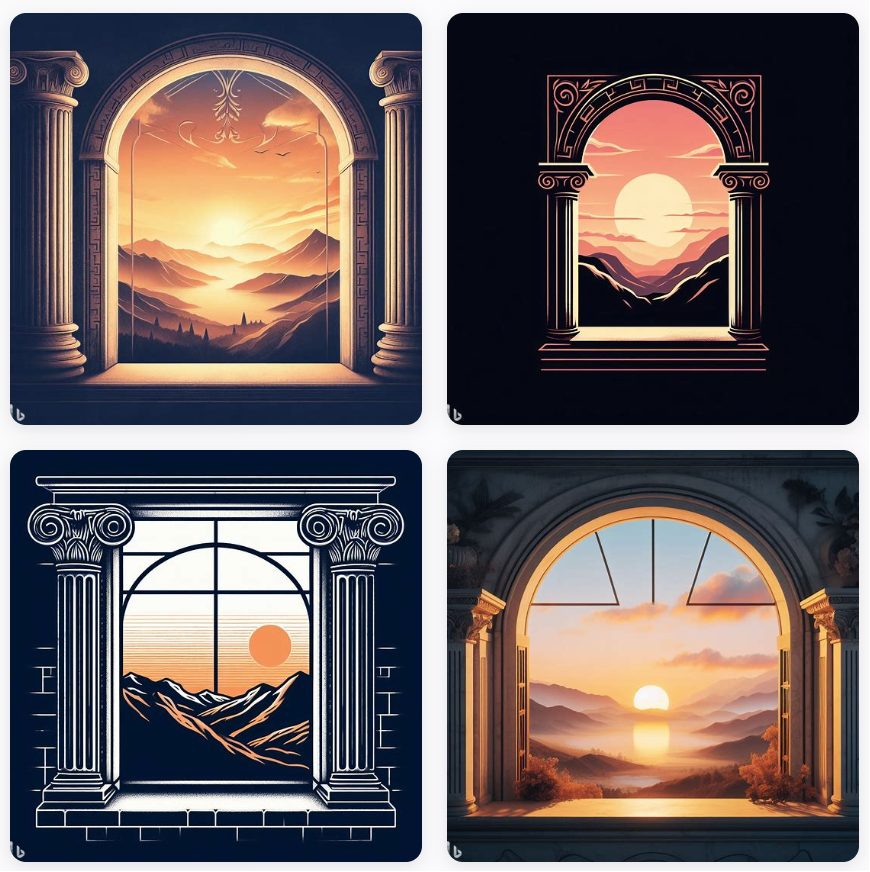
Ancient Rome First Century
The first century in Ancient Rome, spanning from 1 AD to 100 AD, was a period of significant growth and change for the Roman Empire. This era was marked by the rule of several notable emperors, including Augustus, Tiberius, Caligula, Claudius, and Nero. In 14 AD, Augustus, the first Roman Emperor, died and was succeeded by his stepson Tiberius. This marked the beginning of the Julio-Claudian dynasty, which would rule Rome until 68 AD. The first century also saw the expansion of the Roman Empire, with conquests in Britain and the Middle East. The Roman army was at its peak, and Roman law, architecture, and culture flourished. However, this period was also marked by political instability and corruption, particularly during the reigns of emperors like Caligula and Nero. There were several revolts and conspiracies against the emperors, and the Roman Senate struggled to maintain its power and influence. In terms of religion, the first century saw the spread of Christianity, which began as a small sect within Judaism in the eastern provinces of the Roman Empire. Despite facing persecution, Christianity continued to grow and would eventually become the dominant religion of the empire. By the end of the first century, the Roman Empire had reached its greatest extent, stretching from Britain in the west to Mesopotamia in the east. However, the empire was also facing increasing internal and external pressures that would lead to its eventual decline and fall.
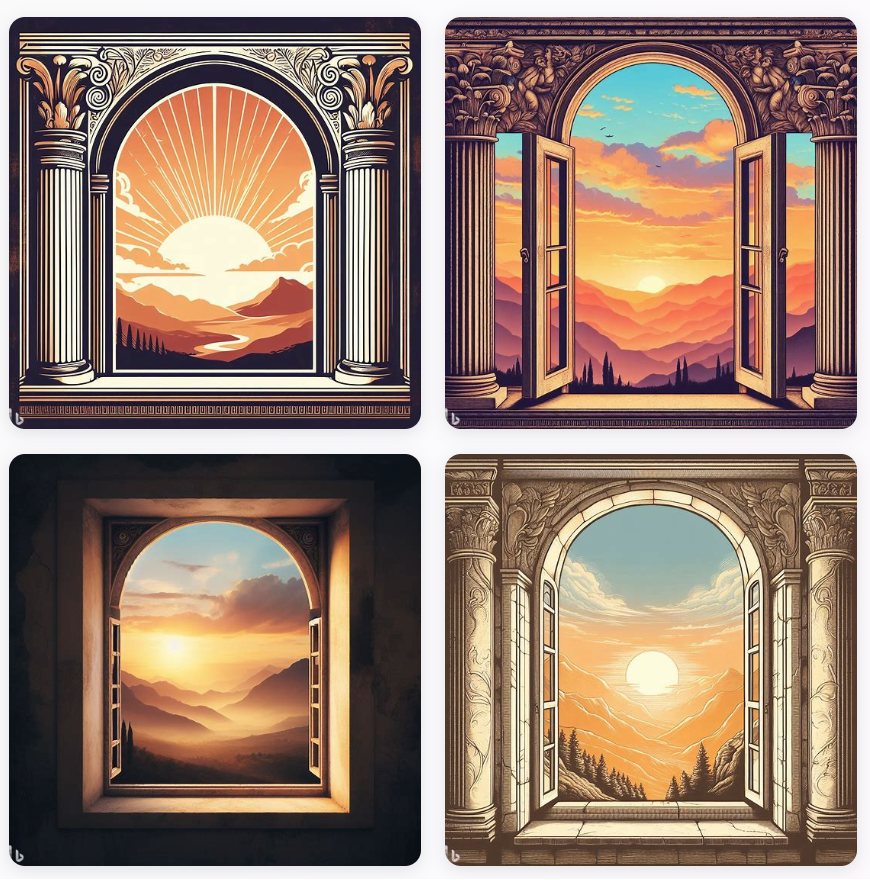
Ancient Rome Third Century
The third century in Ancient Rome, spanning from 201 to 300 AD, was a period of great turmoil and crisis, often referred to as the Crisis of the Third Century or the Imperial Crisis. This period was marked by economic collapse, invasions, civil wars, and the fall of the Western Roman Empire. 1. Economic Crisis: The Roman economy suffered from inflation, a declining population, and a decrease in trade. The silver content of the Roman denarius was reduced to almost zero, leading to a loss of confidence in the currency. 2. Military Crisis: The Roman Empire faced invasions from various barbarian tribes such as the Goths, Persians, and Alamanni. The Roman army was overstretched and unable to effectively defend the vast borders of the empire. 3. Political Crisis: The third century saw a rapid turnover of emperors, with 26 claimants to the throne in a 50-year period. This instability led to frequent civil wars and power struggles. 4. Social Crisis: The crisis also had social implications, with a decline in urban life, a decrease in literacy, and a rise in superstition and belief in magic. 5. Diocletian's Reforms: In the late third century, Emperor Diocletian attempted to address these crises through a series of reforms. He divided the empire into a tetrarchy (rule of four), with two senior emperors (Augusti) and two junior emperors (Caesars). He also introduced economic reforms to stabilize the currency and increased the size of the army. 6. Spread of Christianity: The third century also saw the continued spread of Christianity throughout the Roman Empire. Despite periods of persecution, the religion grew in popularity and influence. By the end of the third century, the Roman Empire had begun to stabilize, setting the stage for the reign of Constantine the Great in the fourth century. However, the crises of the third century had lasting impacts and contributed to the eventual fall of the Western Roman Empire in the fifth century.
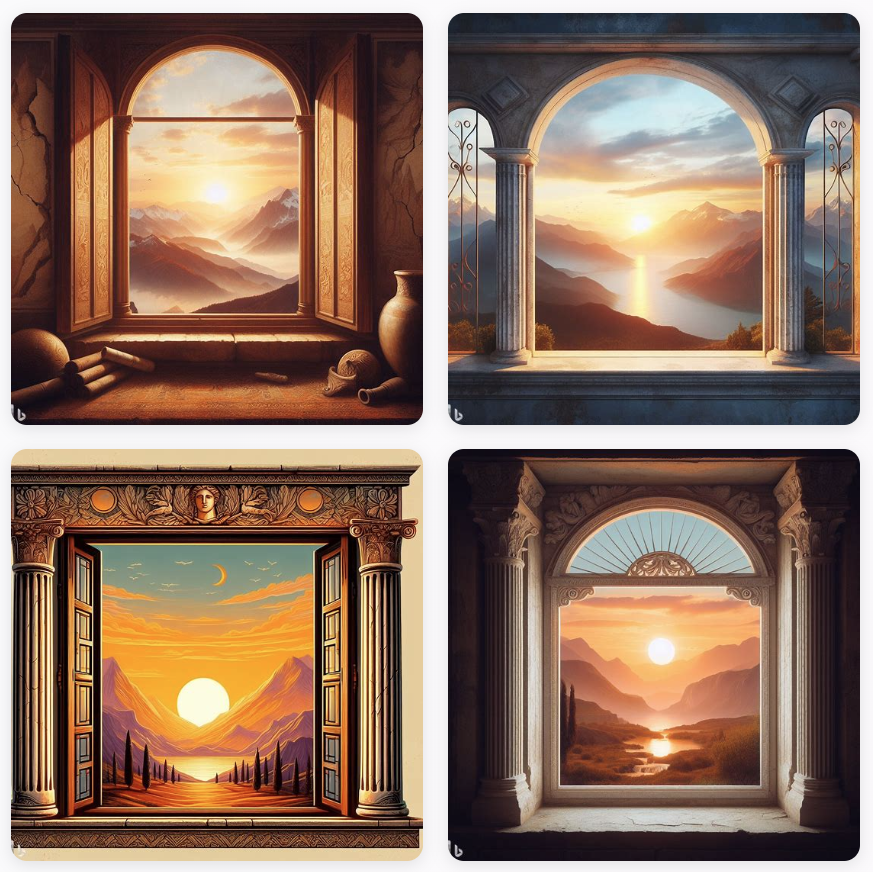
Arabic Eleventh Century
The eleventh century in the Arabic world, also known as the 5th century in the Islamic calendar, was a period of significant cultural, scientific, and political development. This era is often referred to as the Islamic Golden Age, during which the Arab world was a major center for the arts, literature, philosophy, and the sciences. In terms of political history, the eleventh century saw the decline of the Abbasid Caliphate and the rise of regional dynasties. The Fatimid Caliphate in Egypt reached its peak, while in Persia, the Seljuk Turks established a powerful empire. In the realm of science and philosophy, this century was marked by the works of great scholars such as Al-Biruni, Ibn Sina (Avicenna), and Omar Khayyam. Al-Biruni made significant contributions to various fields including mathematics, physics, and astronomy. Ibn Sina, on the other hand, is considered one of the most significant thinkers and writers of the Islamic Golden Age, particularly in medicine and philosophy. Omar Khayyam was a renowned mathematician, astronomer, and poet. In literature, this period saw the compilation of "The Book of One Thousand and One Nights" (Arabian Nights), a collection of Middle Eastern folk tales. In architecture, the Great Mosque of Kairouan in Tunisia and the Al-Hakim Mosque in Egypt were built during this period, showcasing the grandeur of Islamic architecture. Overall, the eleventh century was a period of intellectual and cultural flourishing in the Arab world.
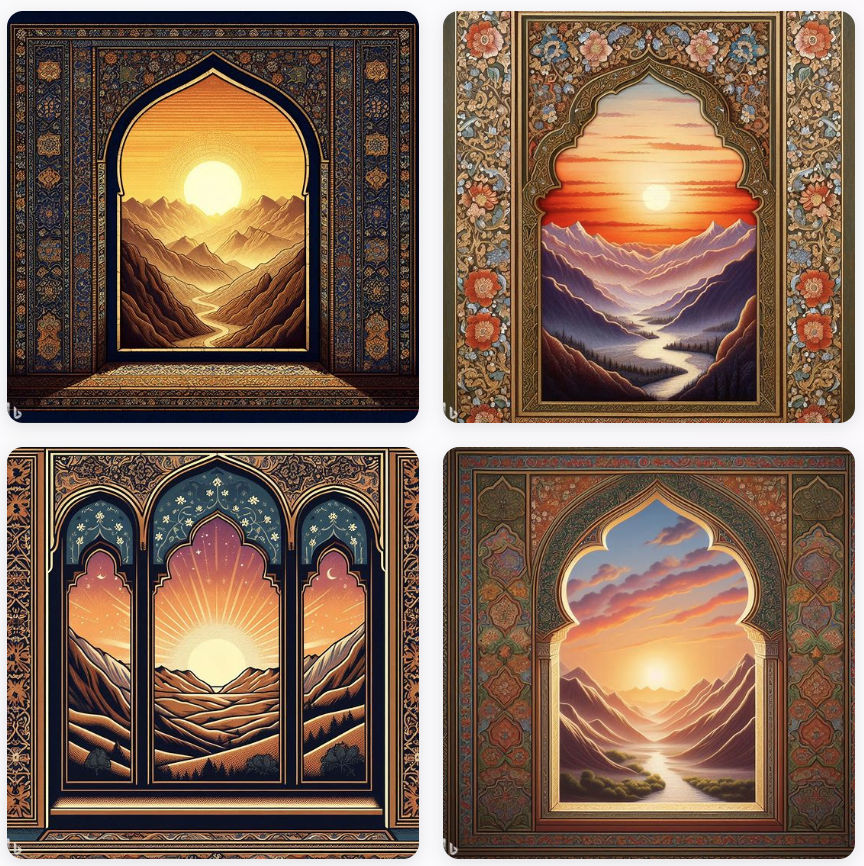
Art Nouveau
Art Nouveau is an international style of art, architecture, and applied art, especially the decorative arts, known in different languages by different names. It was most popular between 1890 and 1910. It was a reaction against the academic art, eclecticism and historicism of 19th century architecture and decoration. Art Nouveau is characterized by its use of a long, sinuous, organic line and was employed most often in architecture, interior design, jewelry and glass design, posters, and illustration. It was a deliberate attempt to create a new style, free of the imitative historicism that dominated much of 19th-century art and design. The style was named after Maison de l'Art Nouveau, a Parisian shop opened in 1895 by the dealer Siegfried Bing, which showcased works in the style. Notable artists associated with Art Nouveau include Alphonse Mucha, Gustav Klimt, and Antoni Gaudí.
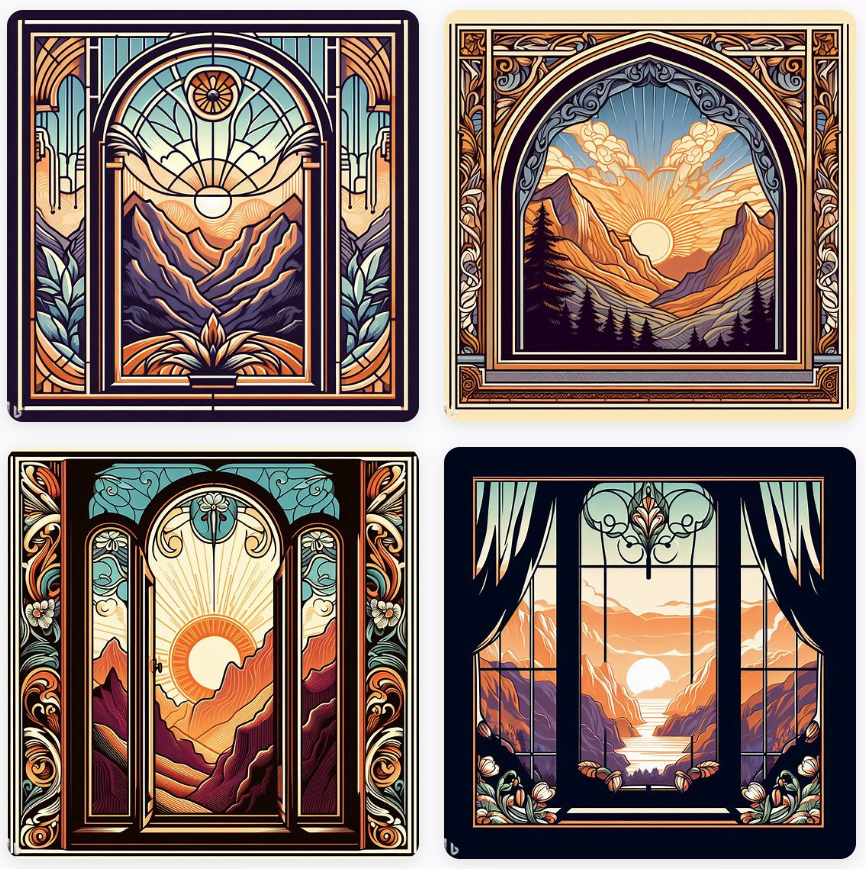
Avantgarde
Avantgarde refers to innovative, experimental, or unconventional ideas, works, or movements in the fields of art, culture, and society. It is often associated with pushing the boundaries of what is accepted as the norm or status quo, primarily in the cultural realm. The term is French for "advance guard" or "vanguard", implying a group that is ahead of its time.

Aztec
The Aztec civilization was a Mesoamerican culture that flourished in central Mexico in the post-classic period from 1300 to 1521. The Aztec culture is generally grouped with the cultural complex known as the Nahuas, because the cultural traits of this group were similar. The Aztec civilization was incredibly advanced in many ways, with a rich and complex mythology and cultural heritage. They were known for their architectural and artistic accomplishments, as well as their complex social, political, and religious institutions. They built massive stone structures, including temples, palaces, and public plazas, all without the use of metal tools. The Aztecs are also known for their agricultural innovations, such as the chinampa system, which allowed them to create fertile gardens on the surface of lakes and swamps. They also developed a complex system of canals for irrigation and transportation. The Aztec society was highly stratified, with a ruling class, a warrior class, a merchant class, and a large class of commoners who were farmers, laborers, and slaves. The Aztec economy was based on agriculture and trade, and they used a system of barter for most transactions. The Aztec civilization came to an end in the 16th century when Spanish conquerors led by Hernán Cortés, allied with other indigenous peoples of the region, captured the emperor Cuauhtémoc and defeated the Aztec army. Despite their downfall, the Aztecs left a lasting legacy and continue to influence Mexican culture to this day.
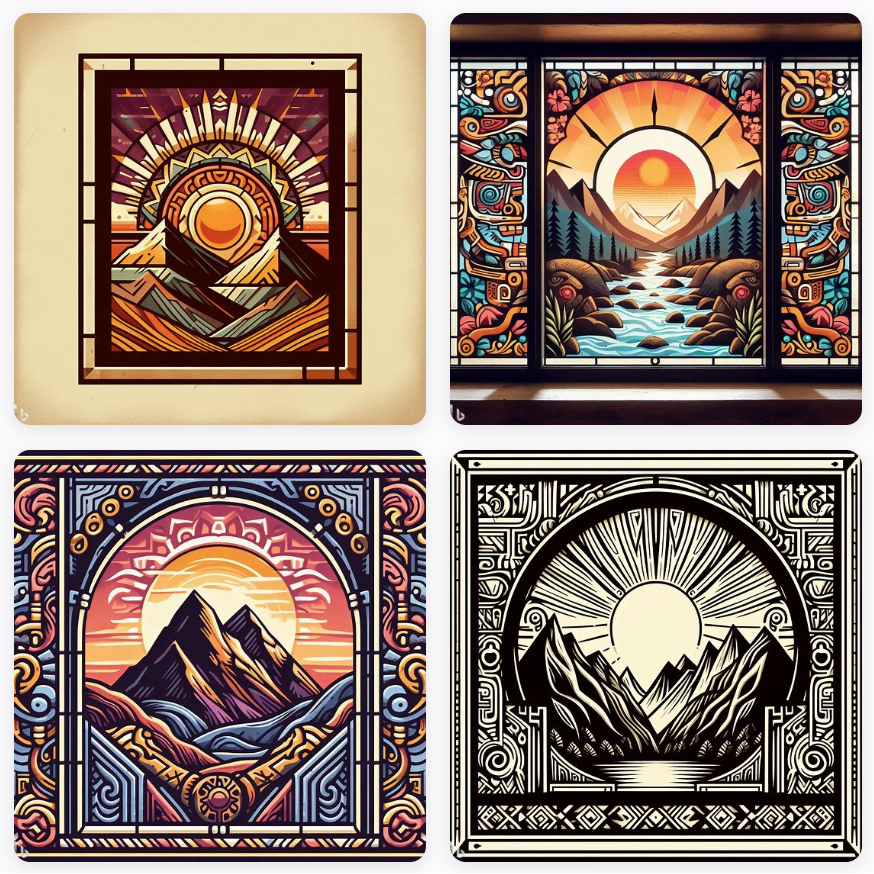
Baroque
Baroque is a style of architecture, music, dance, painting, sculpture, and other arts that flourished in Europe from the early 17th century until the 1740s. It is characterized by elaborate and highly detailed ornamentation. In music, the Baroque style makes use of complex patterns and counterpoint. Some of the most famous Baroque composers include Johann Sebastian Bach, George Frideric Handel, and Antonio Vivaldi. In architecture, the Baroque style is known for its grandeur, drama, and opulence.
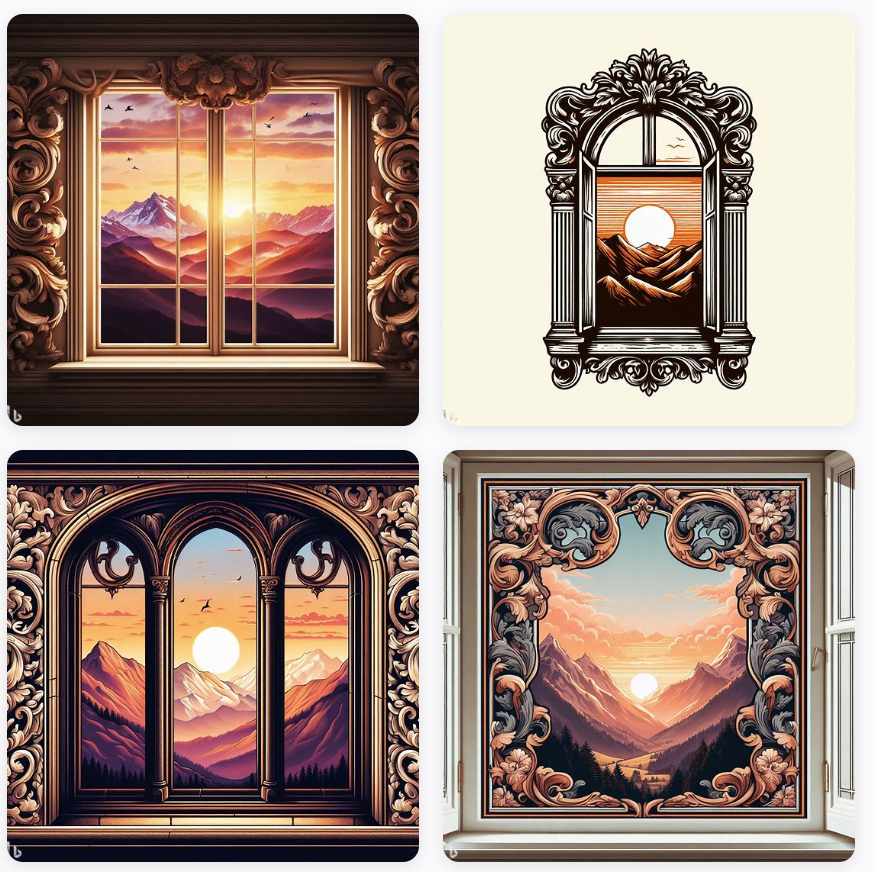
Bauhaus
Bauhaus was a revolutionary German art and design school that operated from 1919 to 1933. Founded by architect Walter Gropius, the school sought to combine crafts and the fine arts, and was famous for its approach to design, which attempted to unify the principles of mass production with individual artistic vision and strove to combine aesthetics with everyday function. The Bauhaus style, also known as the International Style, was marked by the absence of ornamentation and by harmony between the function of an object or a building and its design. It had a profound influence upon subsequent developments in art, architecture, graphic design, interior design, industrial design, and typography. The school was closed by its own leadership under pressure from the Nazi regime, having been painted as a centre of communist intellectualism. Despite its closure, the Bauhaus had a major impact both in Europe and the United States long after it closed.

Beat Generation
The Beat Generation was a literary movement that started in the late 1940s and continued into the early 1960s. It was a group of American post-World War II writers who came to prominence in the 1950s, as well as the cultural phenomena that they both documented and inspired. Central elements of "Beat" culture included rejection of standard narrative values, spiritual quest, exploration of American and Eastern religions, rejection of materialism, explicit portrayals of the human condition, experimentation with psychedelic drugs, and sexual liberation and exploration. The main authors associated with this movement are Jack Kerouac, Allen Ginsberg, and William S. Burroughs. The term "Beat Generation" was coined by Kerouac in 1948 to characterize a perceived underground, anti-conformist youth movement in New York. The "beat" in Beat Generation refers to the rhythm of jazz music, to being "beaten down" by society and the system, and to the beatific or blessed nature of life.

Belle Epoque
The Belle Époque, which translates to "Beautiful Era," was a period in French and European history that lasted from the end of the Franco-Prussian War in 1871 to the outbreak of World War I in 1914. This era was characterized by optimism, peace, new technology, and scientific discoveries. It was also known for its cultural innovations, including the birth of the Art Nouveau style in art, architecture, and design. The Belle Époque was considered a golden age for the upper classes, while the working classes often faced harsh conditions.
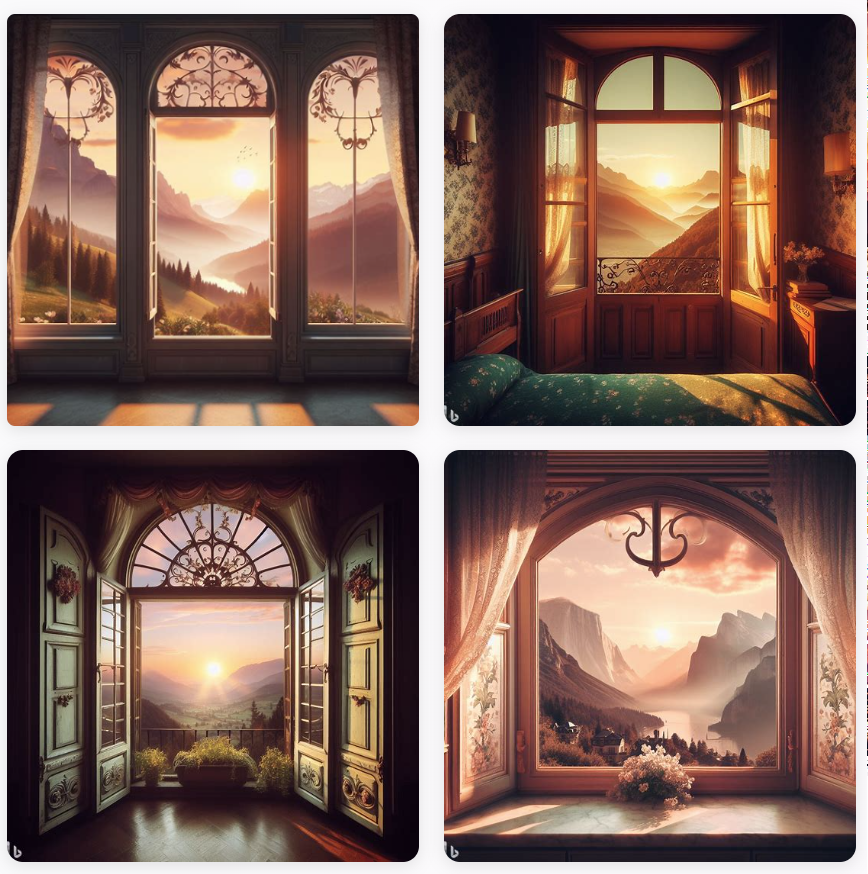
Bic Pen Drawing
Bic pen drawing refers to artwork created using a Bic pen, a type of ballpoint pen. This style of drawing is known for its fine details and precision. The ink from the pen is permanent, allowing the artist to create long-lasting pieces. Bic pen drawings can range from simple sketches to intricate, detailed works of art. The technique requires patience and control, as mistakes cannot be easily erased.
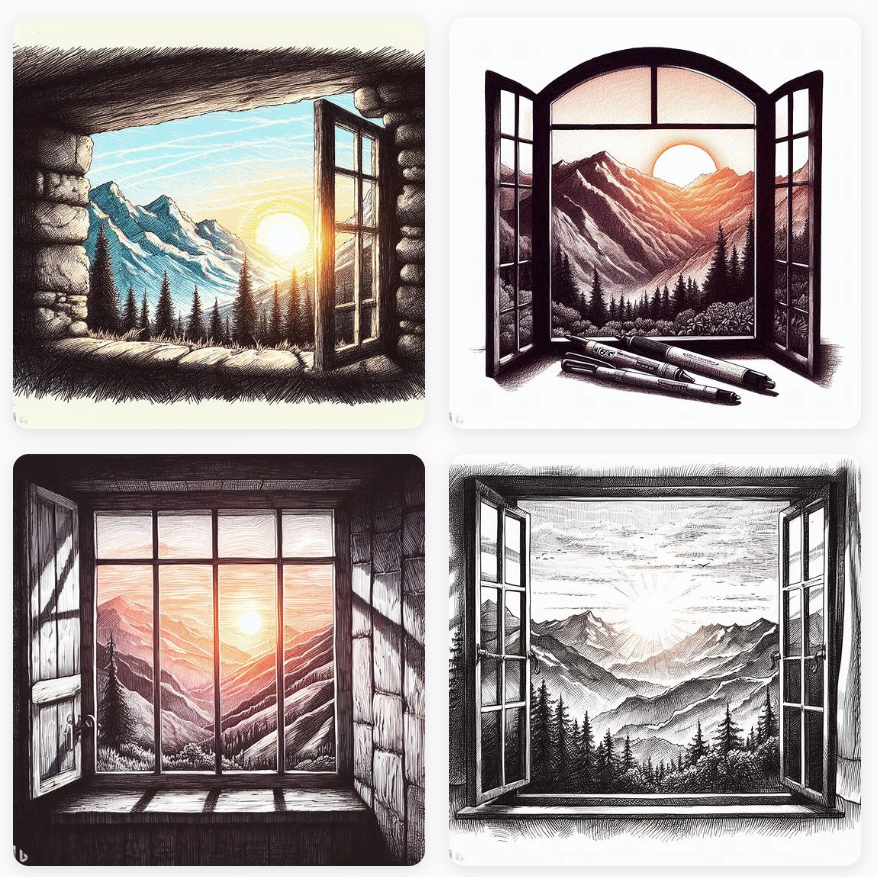
Biopunk
Biopunk is a subgenre of science fiction that focuses on biotechnology and genetic engineering. It often explores the ethical, moral, and societal implications of these technologies, such as cloning, genetic modification, and biohacking. The stories often feature individuals or groups rebelling against corporate or government entities that control these technologies. Biopunk is similar to cyberpunk but focuses on biotechnology rather than information technology.
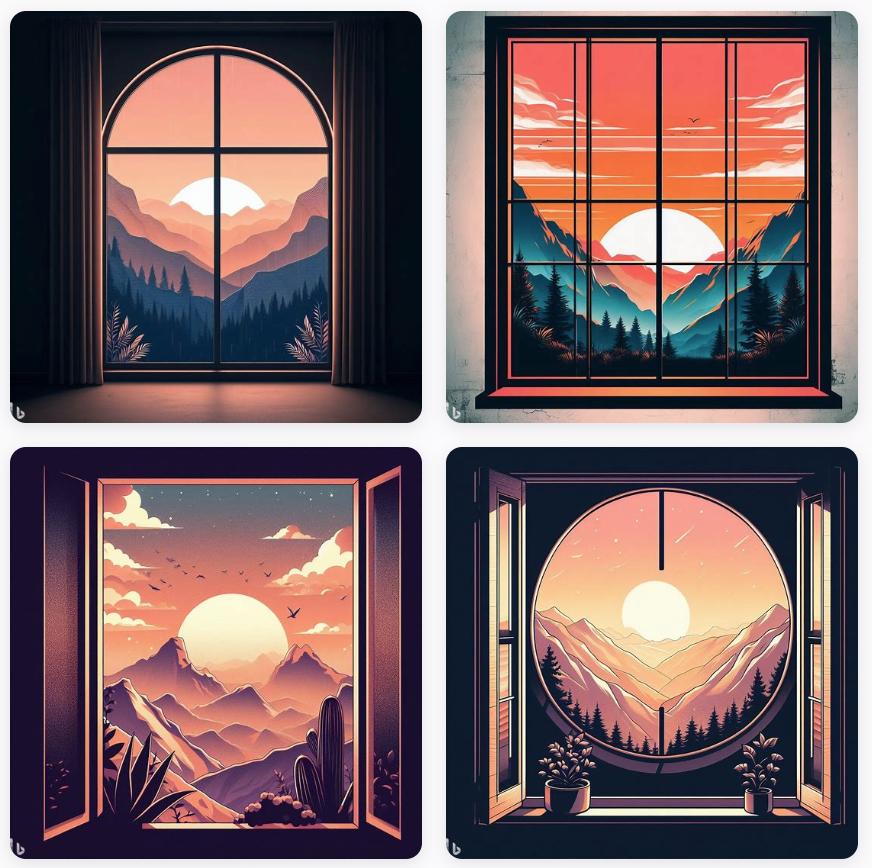
Cave Art
Cave art, also known as parietal art, refers to the prehistoric drawings or paintings found on the walls of caves. This type of art is believed to have been created by early humans and dates back to the Paleolithic era, approximately 40,000 years ago. The most common themes in cave art include large wild animals, such as bison, horses, and deer, and tracings of human hands. The exact purpose of these paintings is not known, but they are believed to have been part of religious rituals or to record events. Some of the most famous examples of cave art include the Lascaux Cave in France and the Altamira Cave in Spain.
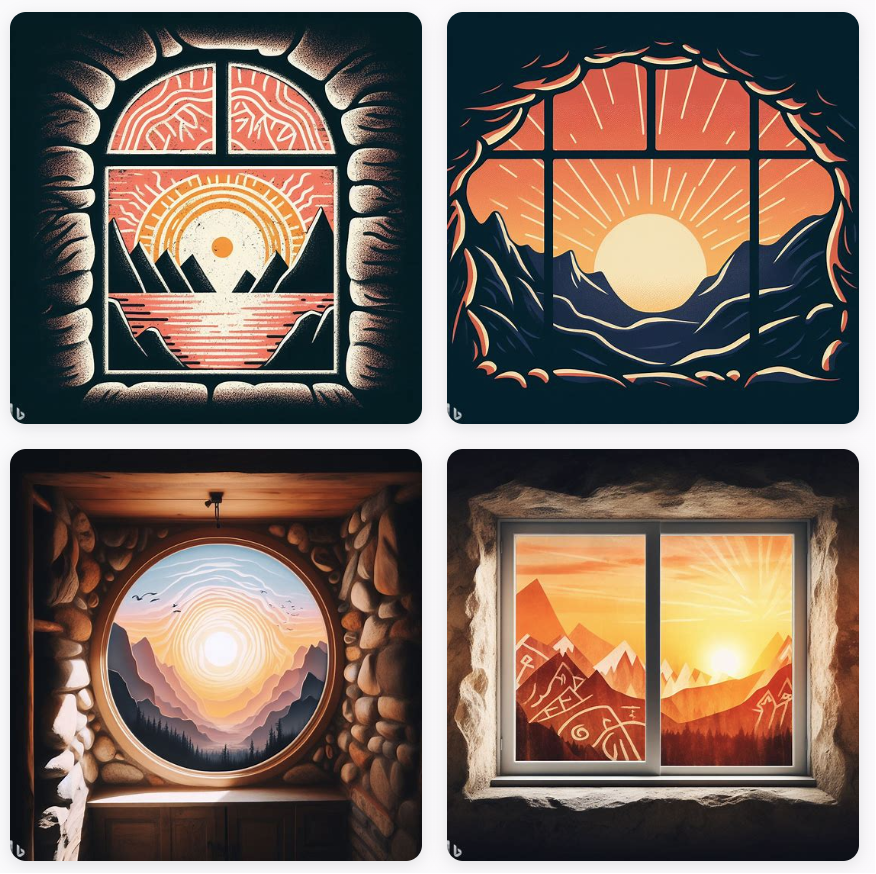
Constructivism
Constructivism is a theory in education and psychology that suggests individuals construct their own understanding and knowledge of the world through experiences and reflection on those experiences. It posits that learning is an active, constructive process where learners are encouraged to construct their own knowledge, and that learning is most effective when a learner is actively engaged in the learning process rather than passively receiving information. In a broader philosophical context, constructivism is the view that all knowledge is constructed, rather than discovered or "found". It asserts that individuals create or construct their own new understandings or knowledge through the interaction of what they already know and believe and the ideas, events, and activities with which they come into contact. There are several branches of constructivism, including social constructivism, radical constructivism, and cognitive constructivism, each with its own nuances and interpretations of the theory.

Cubism
Cubism is an artistic style developed in the early 20th century, characterized by the depiction of natural forms as geometric structures of planes. It was pioneered by artists like Pablo Picasso and Georges Braque. Cubism broke away from the traditional techniques of perspective, modeling, and foreshortening, and instead used simple geometric shapes to represent objects from multiple angles simultaneously. This revolutionary approach had a profound impact on modern art, influencing a range of movements and styles.
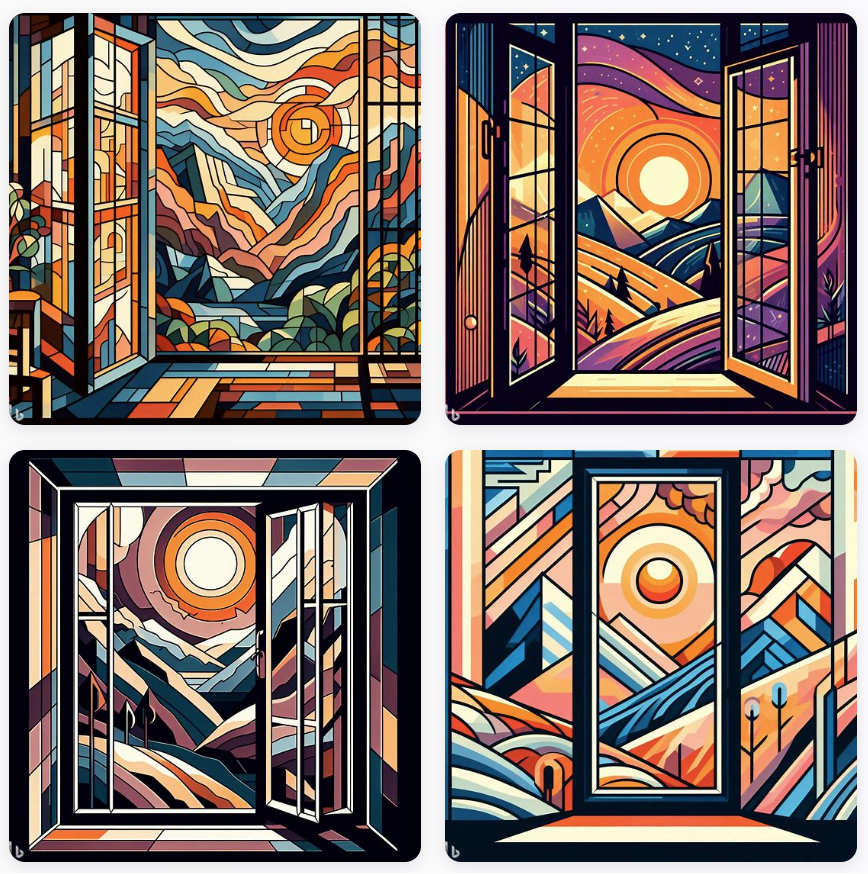
Cybernoir
Cybernoir is a subgenre of fiction that combines elements of the cyberpunk and noir genres. It typically features a dystopian future setting where advanced technology is prevalent, but society is often corrupt and crime-ridden. The noir element brings in themes of moral ambiguity, complex characters, and a dark, moody atmosphere. The protagonist is often a hard-boiled detective or anti-hero. Examples of cybernoir include the movie "Blade Runner" and the video game "Deus Ex".

Cyberpunk
Cyberpunk is a subgenre of science fiction that focuses on a future where society is largely influenced by rapid technological advancements, artificial intelligence, and cybernetics. It often features a dystopian society, where large corporations have significant control over the lives of individuals. The genre is known for its focus on "high tech and low life," featuring advanced technology and science, such as information technology and cybernetics, juxtaposed with a degree of breakdown or radical change in the social order. Cyberpunk plots often center on a conflict among hackers, artificial intelligences, and mega-corporations, and tend to be set in a near-future Earth, rather than the far-future settings or galactic vistas found in novels such as Isaac Asimov's Foundation or Frank Herbert's Dune. The settings are usually post-industrial dystopias but tend to feature extraordinary cultural ferment and the use of technology in ways never anticipated by its original inventors.

Disney Comic Art
Disney comic art refers to the illustrations and visual storytelling found in comic books, graphic novels, and comic strips that feature Disney characters. This includes iconic characters like Mickey Mouse, Donald Duck, Goofy, and characters from Disney movies like Aladdin, The Lion King, and Frozen. Disney comic art is known for its colorful, lively, and often humorous style. It has been produced by various artists and studios around the world, including the famous Italian comic book artist Romano Scarpa and the American cartoonist Carl Barks. The first Disney comics were published in the 1930s and they have since become a significant part of the company's media empire, with popular series like "Walt Disney's Comics and Stories" and "Uncle Scrooge" being published for decades. Disney comic art is not only enjoyed by children but also by adult collectors and fans, and original artwork from Disney comics can be highly sought after.
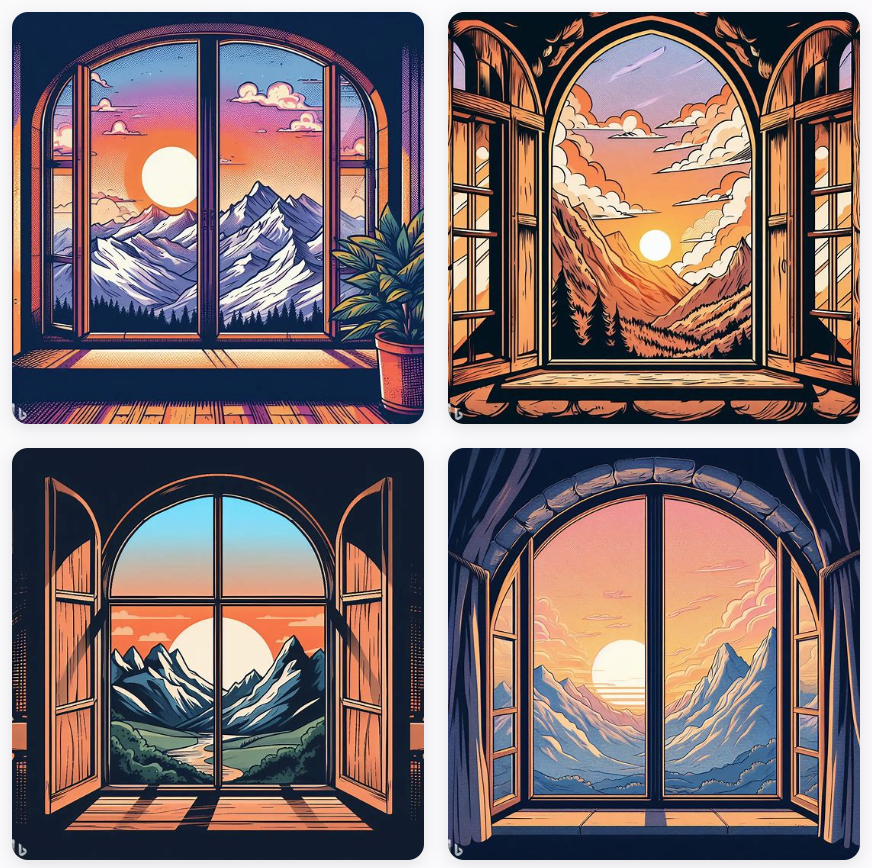
Enamel
Enamel is the hard, outermost layer that covers the crown of the teeth. It is the hardest substance in the human body and is primarily made up of hydroxyapatite, a crystalline calcium phosphate. Enamel protects the sensitive inner layers of the teeth from decay, temperature sensitivity, and wear and tear. It is also responsible for the white appearance of the teeth. Despite its strength, enamel can be damaged by decay, acids from food and drink, and physical trauma.
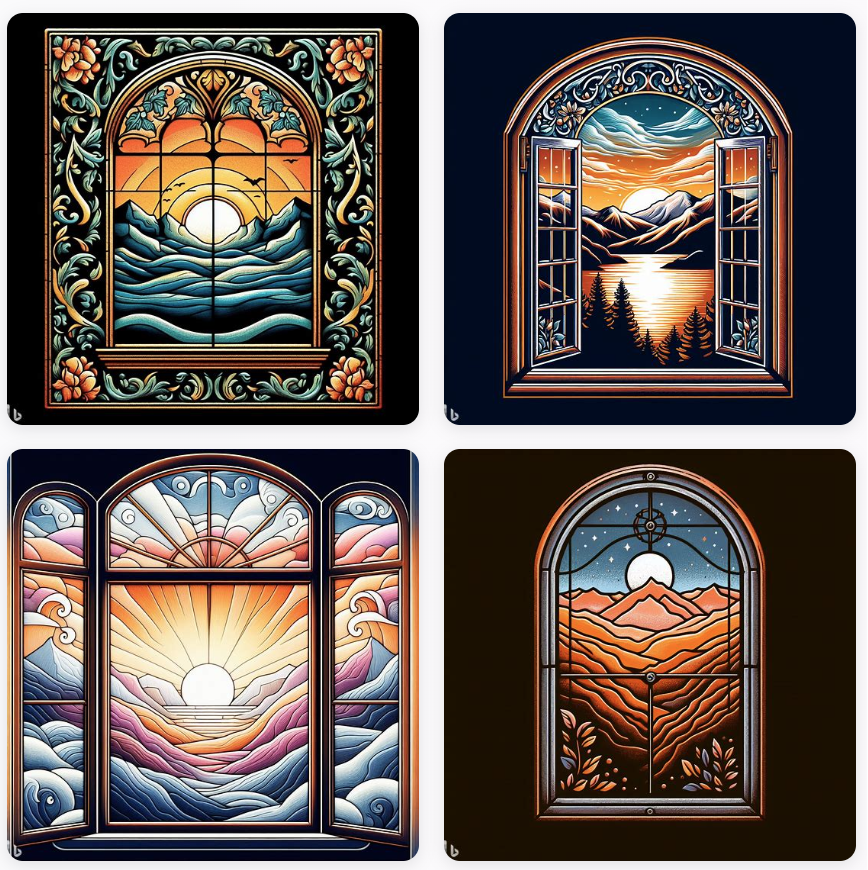
Etching
Etching is a printmaking technique that uses chemical action to produce incised lines in a metal printing plate which then hold the applied ink and form the image. The plate, traditionally copper but now usually zinc, is prepared with an acid-resistant ground. Lines are drawn through the ground, exposing the metal. The plate is then immersed in acid and the exposed metal is bitten, producing incised lines. Stronger acid and longer exposure produce more deeply bitten lines. The resist is removed and ink applied to the sunken lines, but wiped from the surface. The plate is then placed against paper and run through a printing press with great pressure to transfer the ink from the recessed lines. Sometimes ink may be left on the plate surface to provide a background tone.
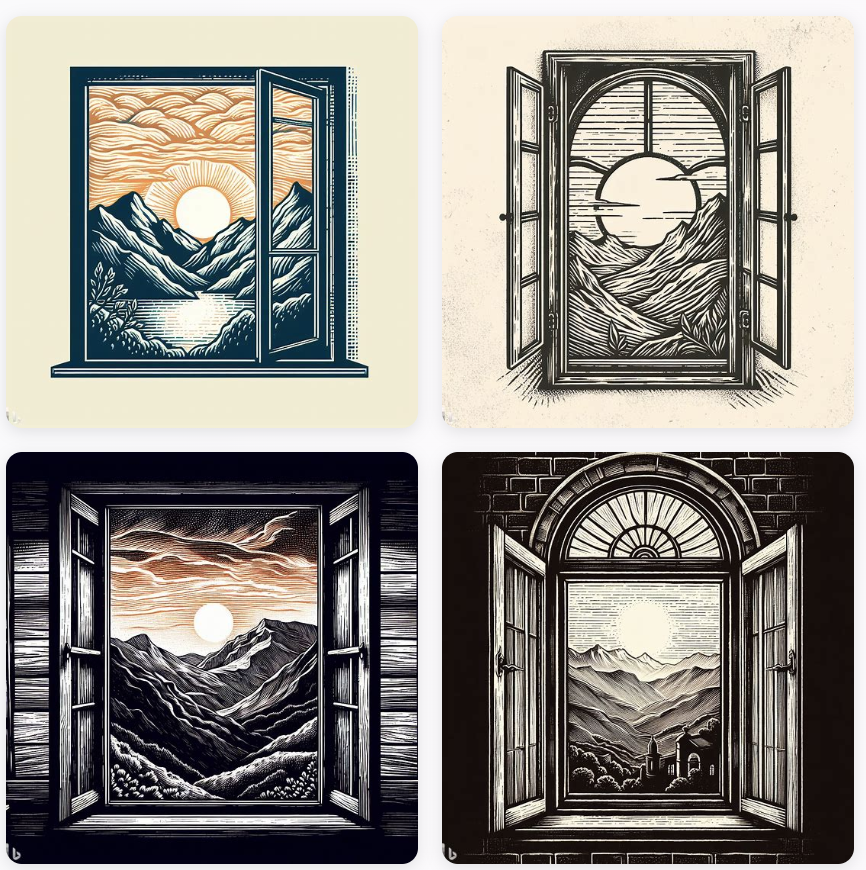
Expressionism
Expressionism is an art movement and style that emerged in the early 20th century, primarily in Germany between 1905 and 1920. It is characterized by a focus on representing raw, emotional, and subjective experiences, often through distorted and exaggerated depictions. This can be seen in various art forms including painting, literature, theatre, film, architecture, and music. Famous expressionist artists include Edvard Munch, Egon Schiele, and Wassily Kandinsky.
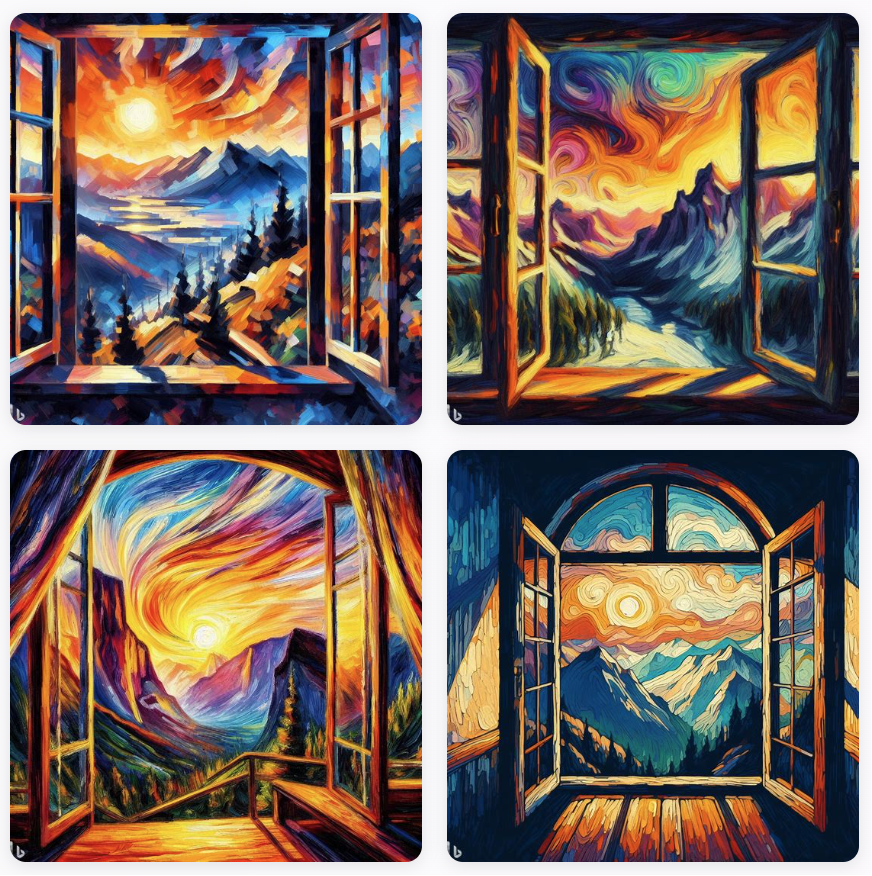
Fauvism
Fauvism is an art movement that originated in France in the early 20th century. The style is characterized by bold, vibrant, and often non-naturalistic use of color. The term "fauvism" comes from the French word "fauve," meaning "wild beast," which was used to describe the movement's raw, emotional style. Notable artists associated with fauvism include Henri Matisse and André Derain. The movement was relatively short-lived, lasting only a few years, but it had a significant impact on the development of modern art.
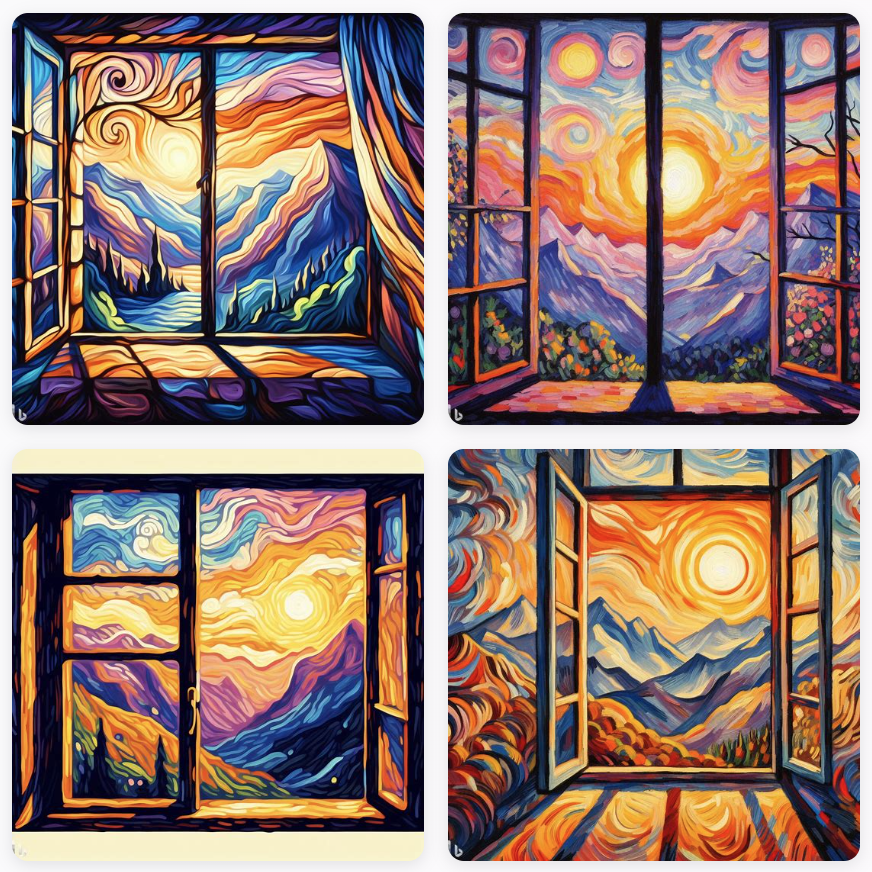
Futurism
Futurism is an artistic and social movement that originated in Italy in the early 20th century. It emphasized and glorified themes associated with the future, including speed, technology, youth and violence, and objects such as the car, the airplane, and the industrial city. Futurism was largely an Italian phenomenon, though there were parallel movements in Russia, England and elsewhere. In the later 20th and early 21st centuries, the term "futurism" has also been used to refer to a genre of science fiction, concerned with predictions of future events and trends, and the impact of technology and science on society. This is often associated with a positive, progressive view of the future, though it can also include dystopian elements. Futurism as a movement has influenced various fields such as art, architecture, fashion, film, literature, music, and even political ideologies.

Gestalt
Gestalt is a German word that roughly translates to "form" or "shape". It is often used in psychology to refer to the idea that the whole of something is greater than the sum of its parts. Gestalt psychology focuses on the human mind and behavior as a whole, suggesting that we perceive things as unified wholes rather than a collection of separate parts. This concept is often applied in fields such as visual perception, problem-solving, and learning.
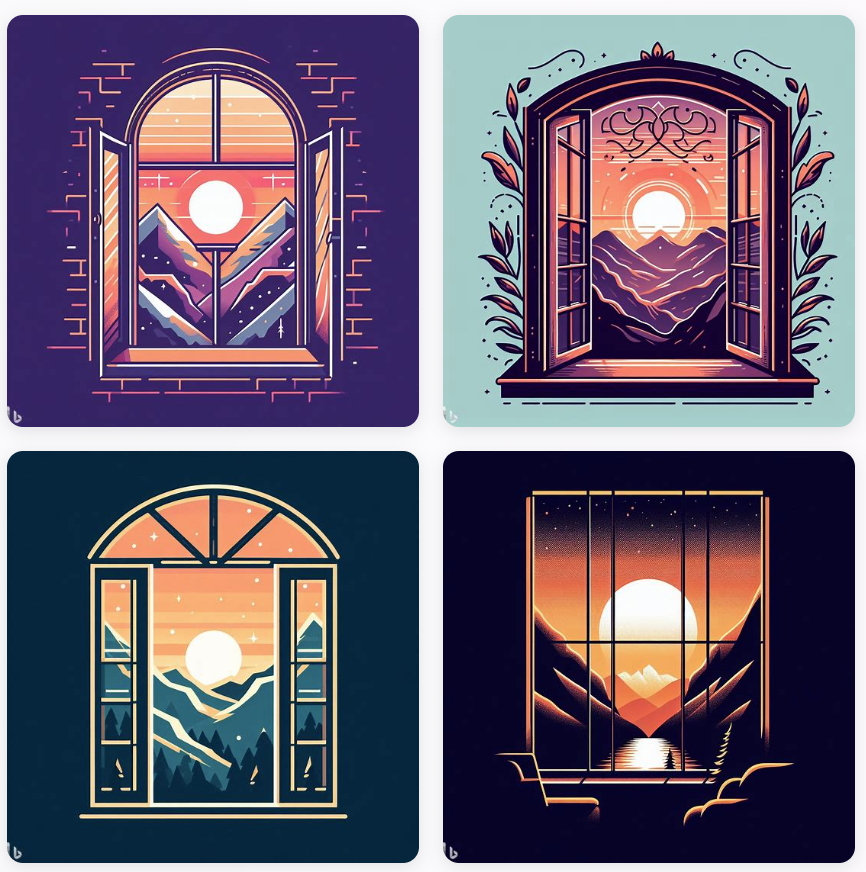
Graffiti
Graffiti is a type of public marking that may appear in the forms of simple written words to elaborate wall paintings. It has existed since ancient times, with examples dating back to Ancient Egypt, Ancient Greece, and the Roman Empire. Graffiti can be seen as a form of street art or vandalism, depending on one's perspective. It is often created with spray paint or marker pens on public walls, buildings, or other surfaces.
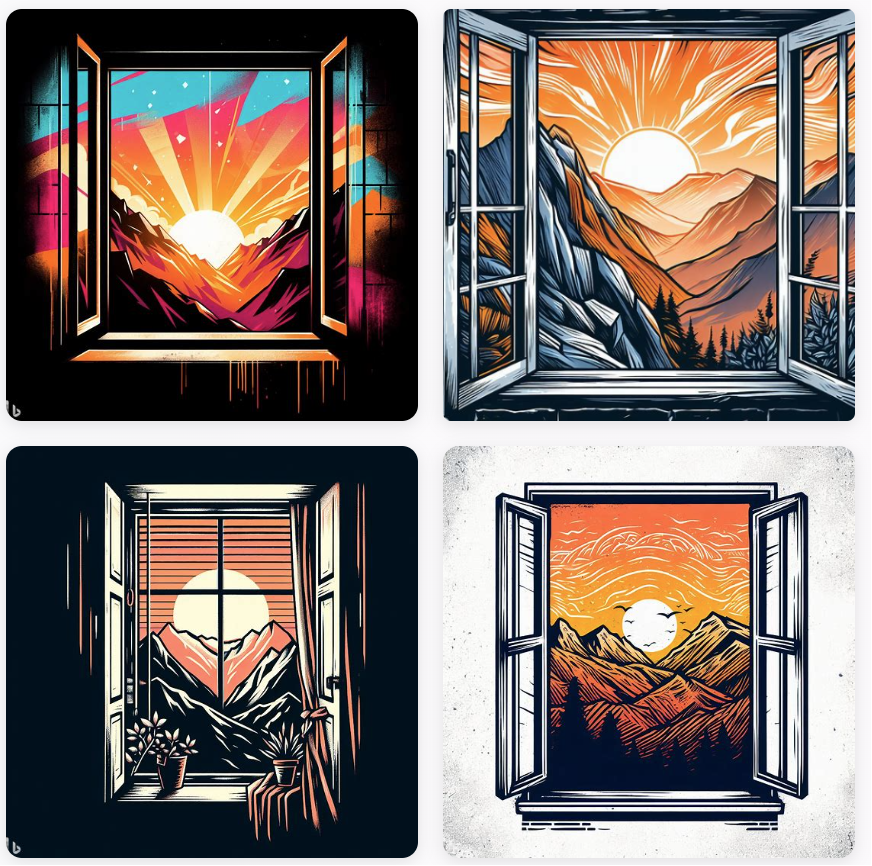
Impressionism
Impressionism is an art movement that originated in France in the late 19th century. It is characterized by small, thin, yet visible brush strokes, open composition, emphasis on accurate depiction of light in its changing qualities, ordinary subject matter, inclusion of movement as a crucial element of human perception and experience, and unusual visual angles. Some of the most famous impressionist artists include Claude Monet, Pierre-Auguste Renoir, and Edgar Degas. The term "impressionism" is also used to describe styles of literature, music, and other art forms, but it originated from the visual art movement.
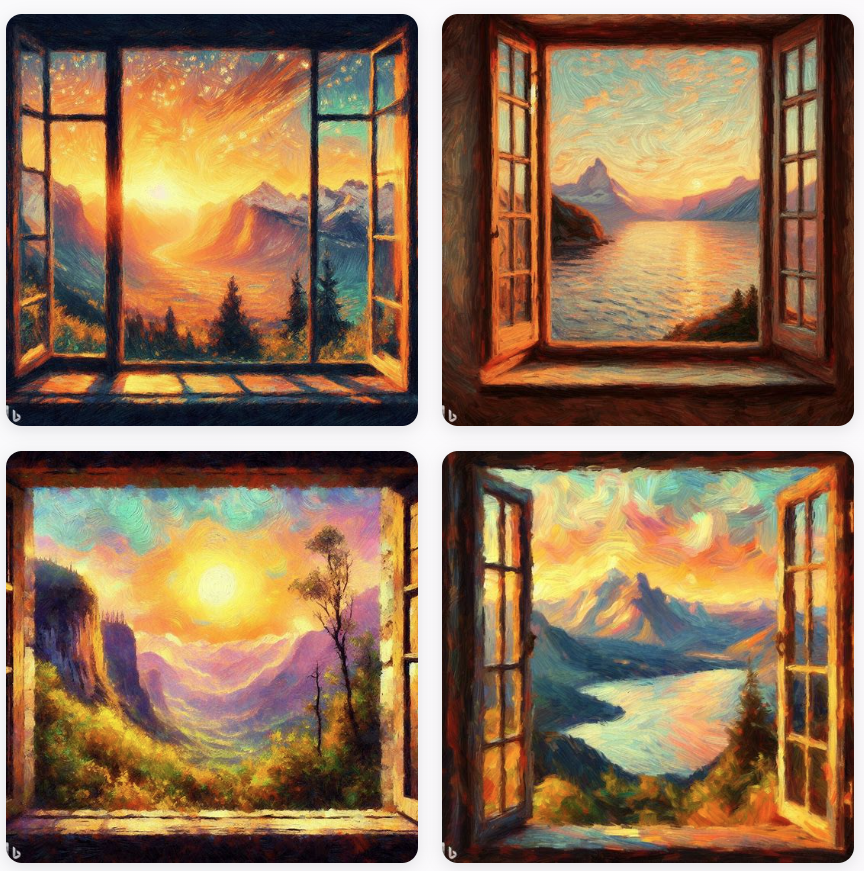
Inca
The Inca Empire, also known as the Incan Empire and the Inka Empire, was the largest empire in pre-Columbian America. Its political and administrative structure is considered by most scholars to have been the most developed in the Americas before Columbus' arrival. The administrative, political and military center of the empire was located in the city of Cusco in modern-day Peru. The Inca civilization arose from the Peruvian highlands sometime in the early 13th century. Its last stronghold was conquered by the Spanish in 1572. From 1438 to 1533, the Incas incorporated a large portion of western South America, centered on the Andean Mountains, using conquest and peaceful assimilation, among other methods. The Inca were known for their unique architecture, road systems, and social organization. They also developed a centralized economy and a complex religion. The Quechua language was the official language of the empire, and many elements of Inca culture still survive today among the Quechua-speaking populations of Peru, Ecuador, Bolivia, and Colombia.
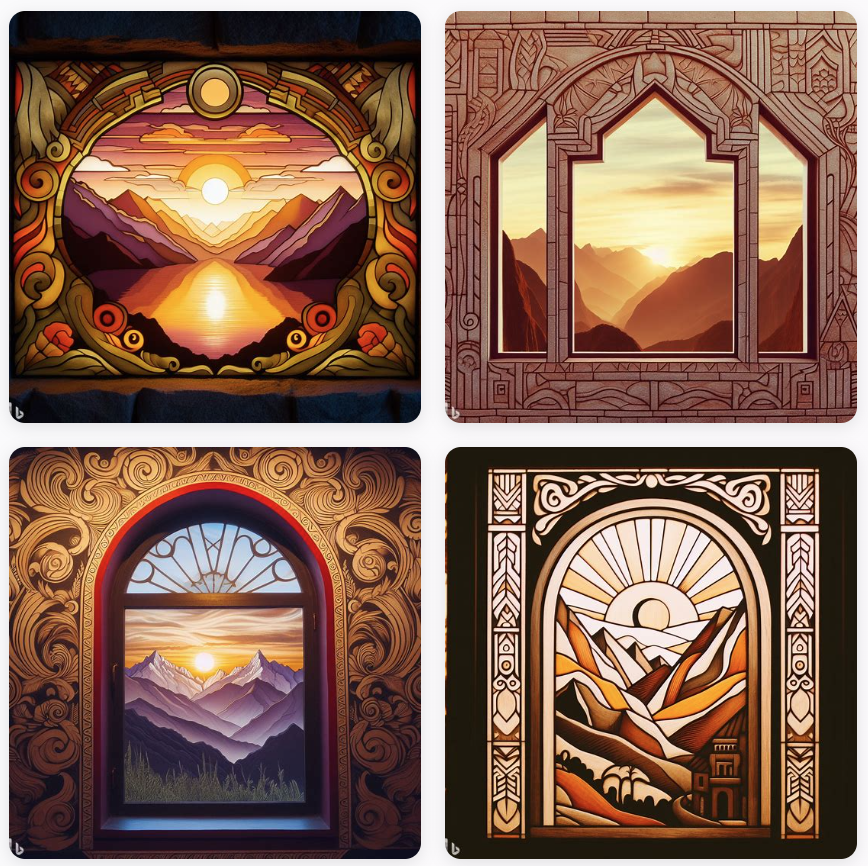
Infographic
An infographic is a visual representation of information or data, such as a chart, diagram, or map, used to present complex information quickly and clearly. It combines elements of text, graphics, and design to promote understanding and engagement. Infographics are often used in marketing, education, journalism, and other fields where large amounts of data need to be explained in a concise and visually appealing way.

Installation Art
Installation art is a genre of contemporary art that involves the creation of large-scale, site-specific installations that transform the perception of a space. These installations can be temporary or permanent, and they often use a variety of materials and technologies, including video, sound, light, and even the natural environment. The viewer is often invited to interact with the artwork in some way, making the experience of the artwork a key part of the installation. Some well-known installation artists include Yayoi Kusama, Christo and Jeanne-Claude, and Ai Weiwei.

Kawaii
"Kawaii" is a Japanese word that translates to "cute" or "adorable" in English. It is often used to describe a specific aesthetic in Japanese pop culture that includes elements such as bright colors, cute characters, and a sense of innocence and fun.

Kinetic
Kinetic refers to the energy that an object possesses due to its motion. It is derived from the Greek word "kinesis", meaning motion. The amount of kinetic energy an object has depends on its mass and speed. In physics, the kinetic energy of an object is calculated using the formula: KE = 1/2 mv^2, where m is the mass of the object and v is its velocity.
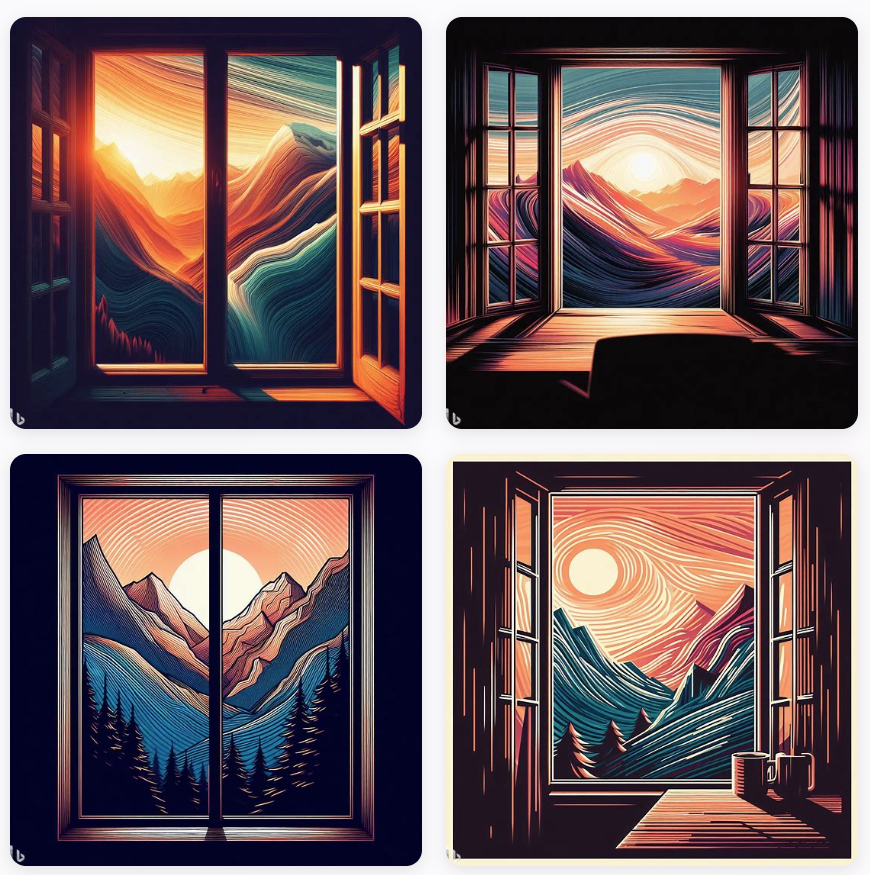
Kintsugi
Kintsugi, also known as Kintsukuroi, is a traditional Japanese art form that involves repairing broken pottery with a special lacquer dusted with powdered gold, silver, or platinum. This method emphasizes the cracks and breaks instead of hiding them, thus giving the repaired pottery a unique appearance and celebrating its history. The philosophy behind Kintsugi is related to the Japanese philosophy of wabi-sabi, which embraces the flawed or imperfect.

Lacquer
Lacquer is a type of hard, shiny finish or coating that is typically applied to wood or metal. It is often used in furniture, musical instruments, and other decorative items to give them a glossy, polished appearance. Lacquer can also serve as a protective layer, helping to prevent damage from moisture, heat, and other environmental factors. It is made from a solution of shellac in alcohol, or of synthetic substances, that dries to form a hard, protective coating.
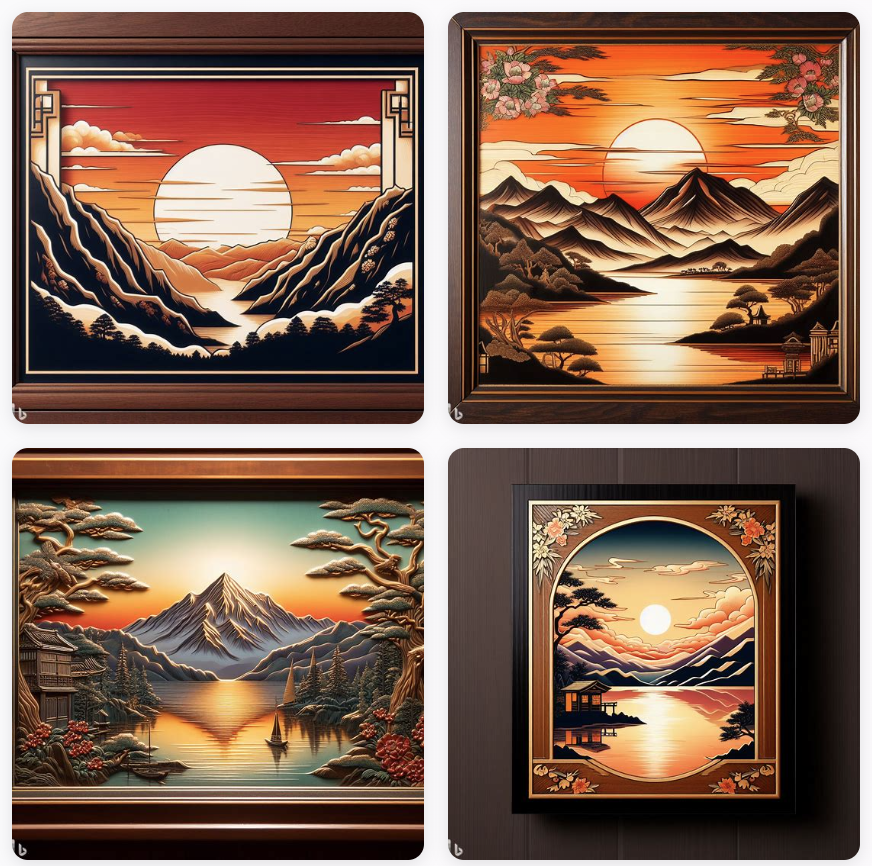
Lyrical Abstraction
Lyrical Abstraction is an art movement that emerged in the 1960s and 70s, characterized by free, emotive, and personal expression. It is a type of abstract art where artists use abstract forms or non-objective forms to convey emotions, feelings, ideas, or other subjective experiences. The term "lyrical" is used to describe the romantic, emotive, or expressive qualities of these works. Artists working in this style often use fluid shapes, brushwork, and color fields to create compositions that may seem spontaneous or intuitive. The movement is often associated with abstract expressionism and color field painting, but it also incorporates elements of other styles and movements. Notable artists of Lyrical Abstraction include Helen Frankenthaler, Sam Francis, and Joan Mitchell.
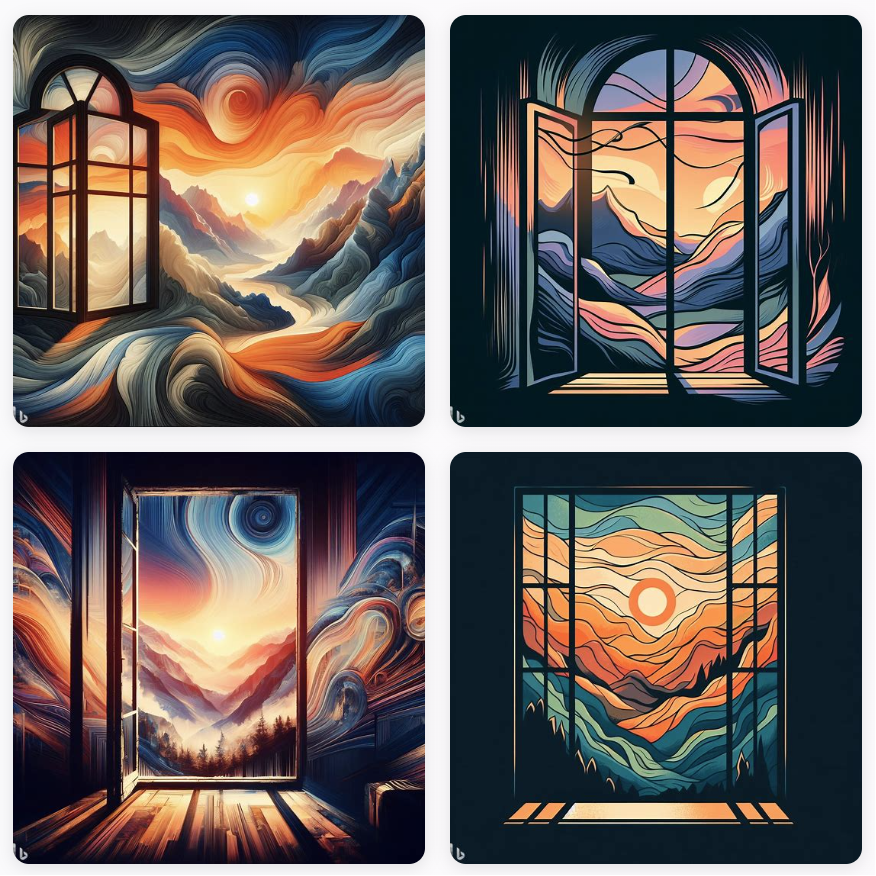
Lyrical Land
In the lyrical land where words dance and sway, Where metaphors bloom and similes play, Where verses flow like a melodious stream, And every thought is a poet's dream. In the lyrical land where rhymes are the breeze, And emotions are painted with the greatest ease, Where every heartache, every joy, every fear, Is captured in words, crystal clear. In the lyrical land where sonnets are the sun, And ballads are moonlight when the day is done, Where every whisper of love, every cry of despair, Is echoed in lyrics, floating in the air. In the lyrical land where stanzas are the stars, And poetry is the language, no matter where you are, Where every soul speaks in rhythm and rhyme, In the lyrical land, where words are sublime. In the lyrical land where the pen is the sword, And the paper is the canvas for the spoken word, Where every emotion, every thought, every feeling, Is a poem in the making, a story revealing. In the lyrical land where the poet is the king, And words are the jewels in the crown he brings, Where every line is a path, every word a door, To the lyrical land, where poetry is the core.
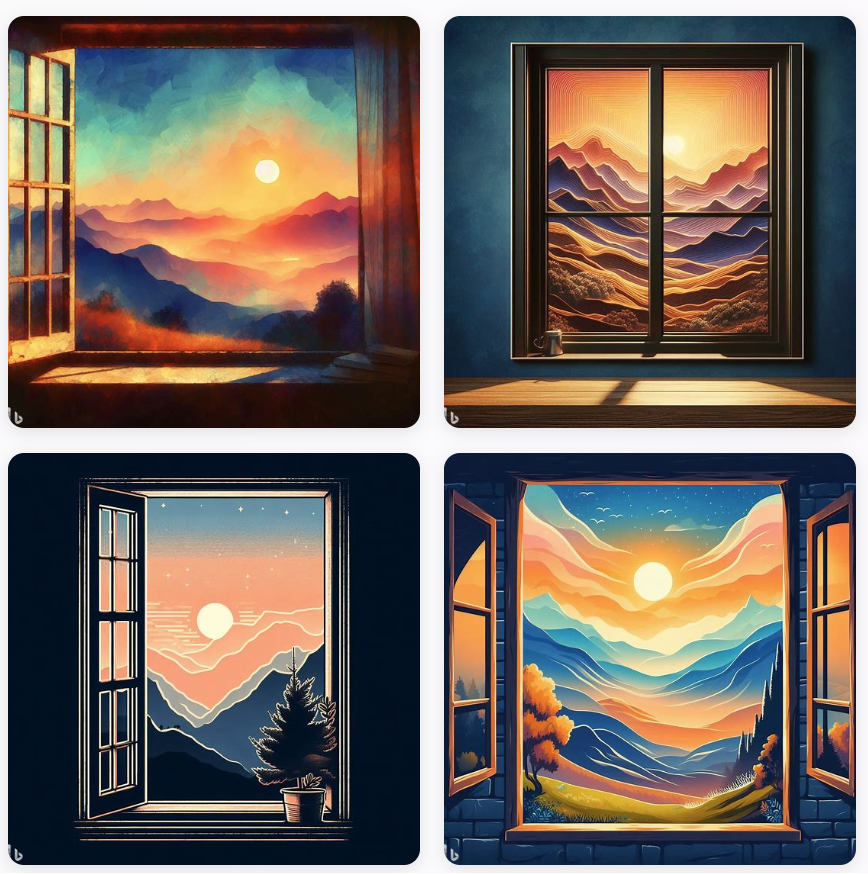
Mandala
A mandala is a geometric configuration of symbols used in various spiritual traditions. In Hindu and Buddhist practices, mandalas are created as a form of meditation or for ritual purposes. They are often intricate and colorful, featuring a central point and symmetrical patterns radiating outwards. The word "mandala" is derived from Sanskrit and roughly translates to "circle," reflecting the design's emphasis on unity and wholeness. In psychology, Carl Jung used mandalas to explore the unconscious mind and believed they represented the self and our place within the universe.

Manga
Manga is a style of comic books and graphic novels that originated in Japan. It covers a wide range of genres, from action, adventure, and romance to fantasy, science fiction, and horror. Manga is typically printed in black-and-white and is read from right to left, which is the opposite of how English-language comics are read. Some popular manga series include "Naruto," "One Piece," "Dragon Ball," and "Attack on Titan." Manga has a significant influence on Japanese culture and is a major part of the country's publishing industry.
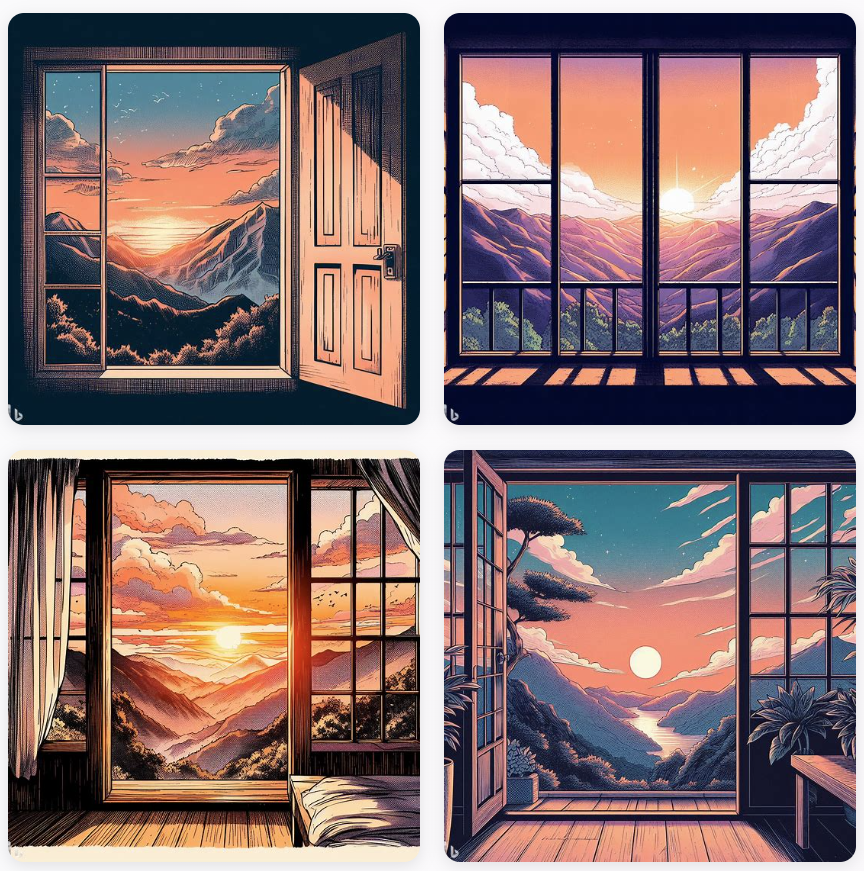
Maximalism
Maximalism is a style or movement in various forms of art and design, especially visual art and music, where the work is characterized by excess and redundancy. It is a reaction against minimalism and is often associated with postmodernism and the use of techniques such as pastiche and complexity. In interior design, maximalism often involves the use of bright colors and patterns, eclectic furnishings, and a large number of decorative elements.

Mayan
The Mayan civilization was a Mesoamerican civilization developed by the Maya peoples, noted for its hieroglyphic script—the only known fully developed writing system of the pre-Columbian Americas—as well as for its art, architecture, mathematics, calendar, and astronomical system. The Maya civilization developed in an area that encompasses southeastern Mexico, all of Guatemala and Belize, and the western portions of Honduras and El Salvador. This region consists of the northern lowlands encompassing the Yucatán Peninsula, and the highlands of the Sierra Madre, running from the Mexican state of Chiapas, across southern Guatemala and onwards into El Salvador, and the southern lowlands of the Pacific littoral plain. The civilization's height was between 250 and 900 AD, but the culture continued to thrive until the Spanish conquest in the 16th and 17th centuries.
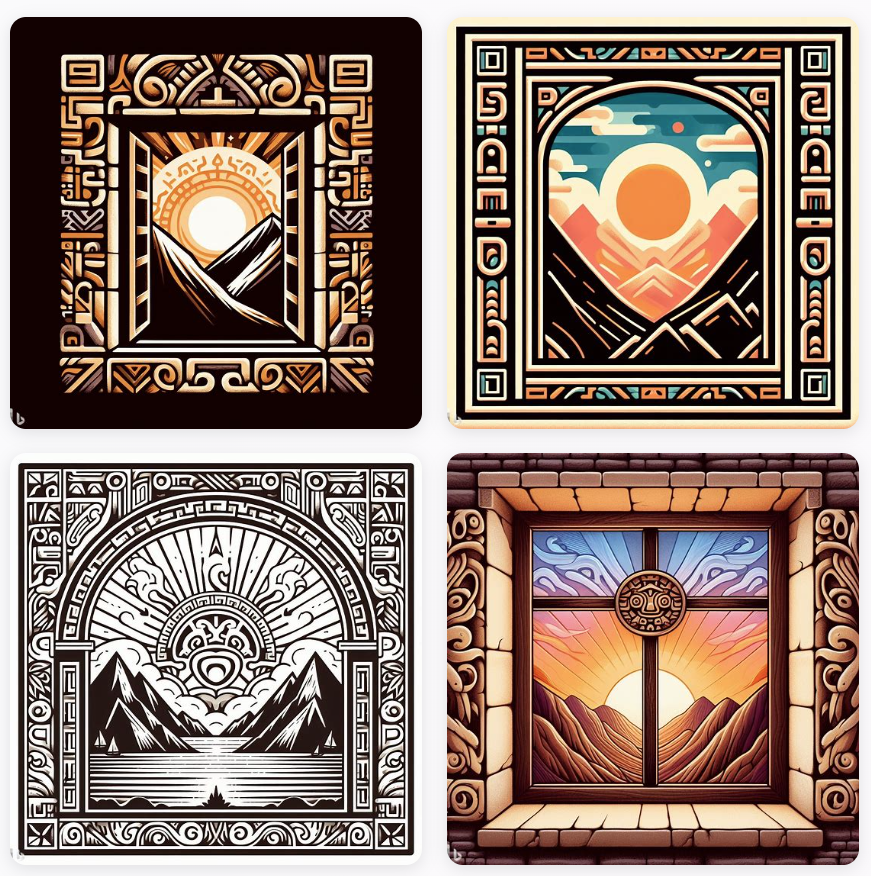
Minimalism
Minimalism is a design and lifestyle movement characterized by simplicity, functionality, and the use of minimal elements. It originated in the late 20th century as a reaction against complex and often unnecessary details in art, architecture, music, and design. In a broader sense, minimalism also refers to a way of life that embraces simplicity and reduces material possessions. The goal of minimalism is to strip away excess and focus on the essential, creating a sense of clarity, purpose, and calm.
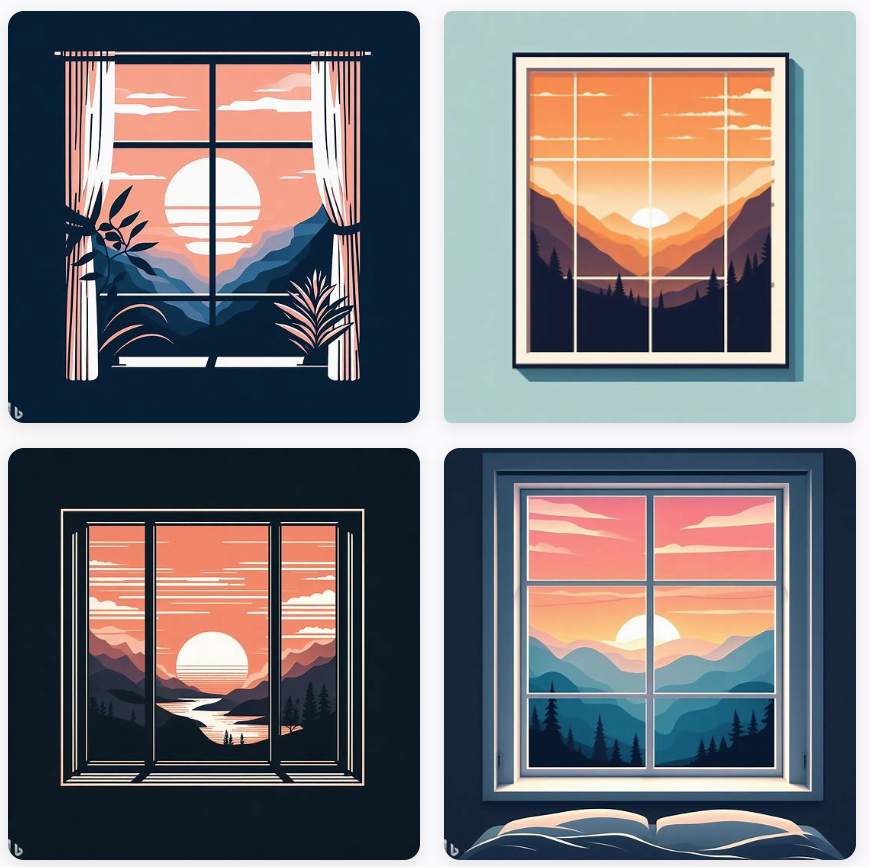
Modern
The term "modern" generally refers to something that is contemporary or current, in relation to the present time. It can be used to describe various aspects such as technology, art, design, lifestyle, thought, etc. For example, in the context of art, modern art refers to artistic works produced during the period extending roughly from the 1860s to the 1970s. In terms of technology, modern technology refers to the latest and most advanced devices, systems, or methods.

Modernism
Modernism is a cultural, intellectual, and artistic movement or condition that came about in the late 19th and early 20th centuries. It is characterized by a deliberate and radical break from traditional forms of art, architecture, literature, religious faith, social organization, and daily life. Modernists sought to represent the realities and complexities of modern life in their works, often through experimental and abstract means. Key figures of modernism include artists like Pablo Picasso, writers like James Joyce and Virginia Woolf, and architects like Le Corbusier and Frank Lloyd Wright.

Monoline
Monoline refers to a business that specializes in a single type of product or service. This term is often used in the insurance and financial services industries. For example, a monoline insurance company might only offer car insurance, while a monoline bank might only offer home loans. The advantage of this approach is that it allows the company to focus all its resources and expertise on one area, potentially offering better service or lower prices than competitors. However, it also exposes the company to greater risk if that one area suffers a downturn.
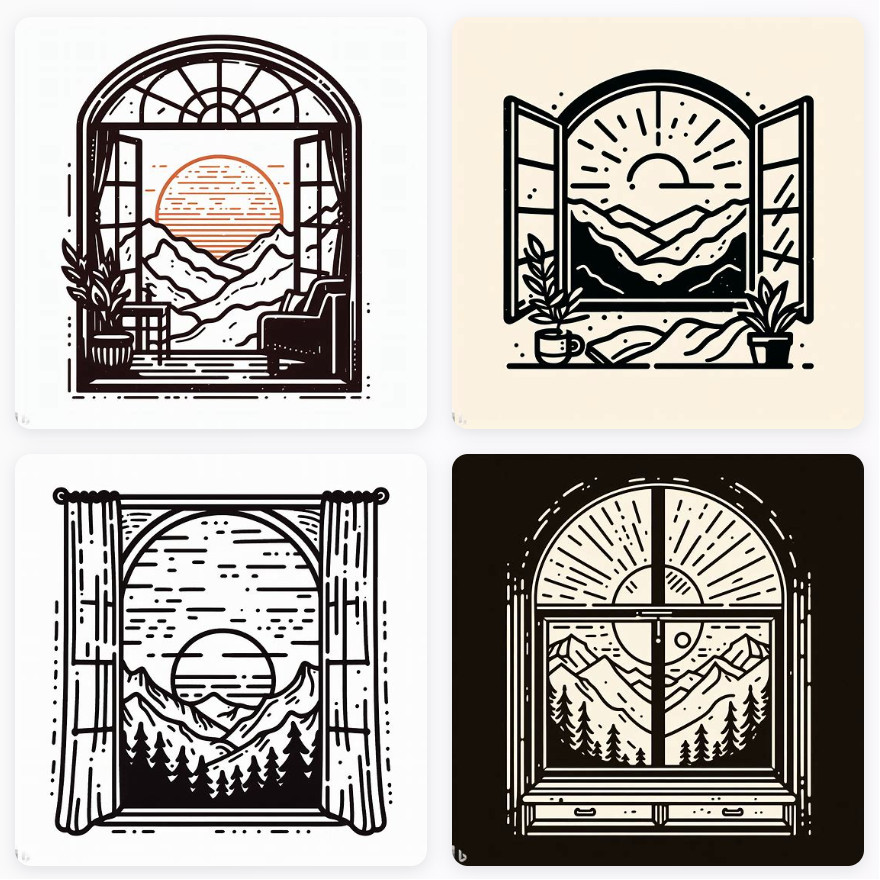
Naturalism
Naturalism is a philosophical and artistic movement that emphasizes observation and the scientific method in the study of human beings and the natural world. In philosophy, it rejects the idea of supernatural influences and asserts that the world can be understood through natural laws and principles. In literature and art, naturalism involves detailed, realistic, and factual description of the everyday life and experiences of ordinary people. It often focuses on the darker or harsher aspects of life, including poverty, prejudice, and other social issues. Naturalism emerged in the late 19th century and is often associated with authors like Emile Zola and Stephen Crane.
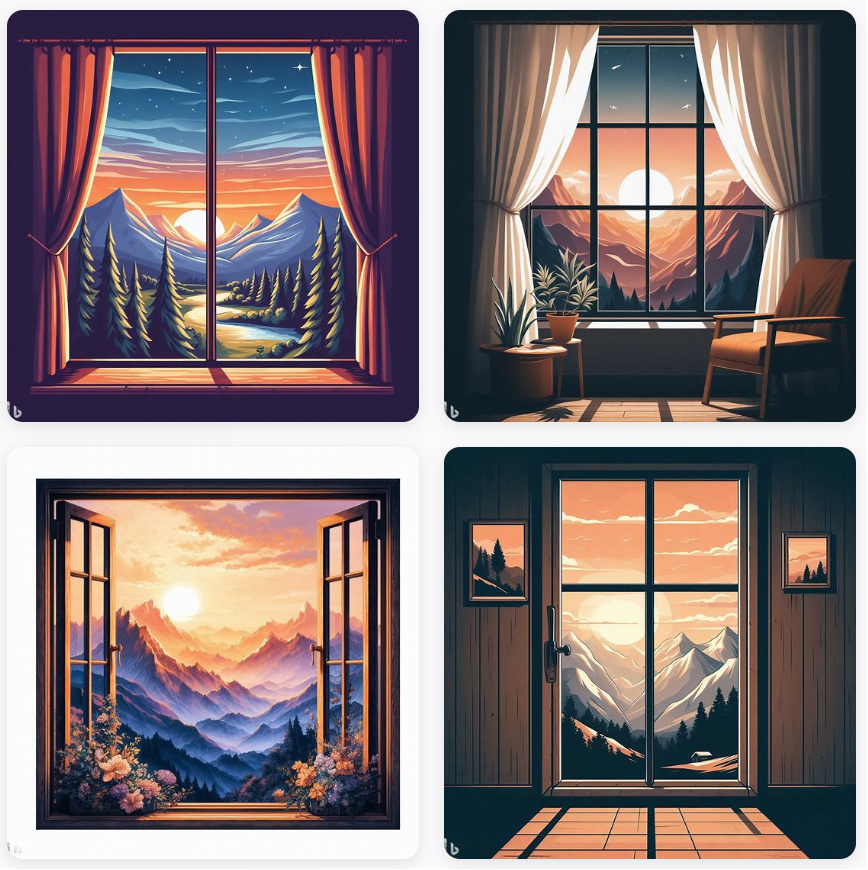
Neo Impressionism
Neo-Impressionism is an art movement that began in the late 19th century as a response to the loose brushwork and use of light in Impressionism. The movement was pioneered by artists like Georges Seurat and Paul Signac, who sought to develop a more scientific approach to painting. Neo-Impressionists used a technique called pointillism, or divisionism, where they applied small dots or strokes of pure color to their canvases. The idea was that these colors would blend in the viewer's eye, creating a more vibrant and luminous effect. The movement was not just about a new painting technique, but also embraced ideas about the harmony of color and the emotional and symbolic expressions of color. Neo-Impressionism had a significant influence on the development of modern art, particularly on movements like Fauvism and Cubism.
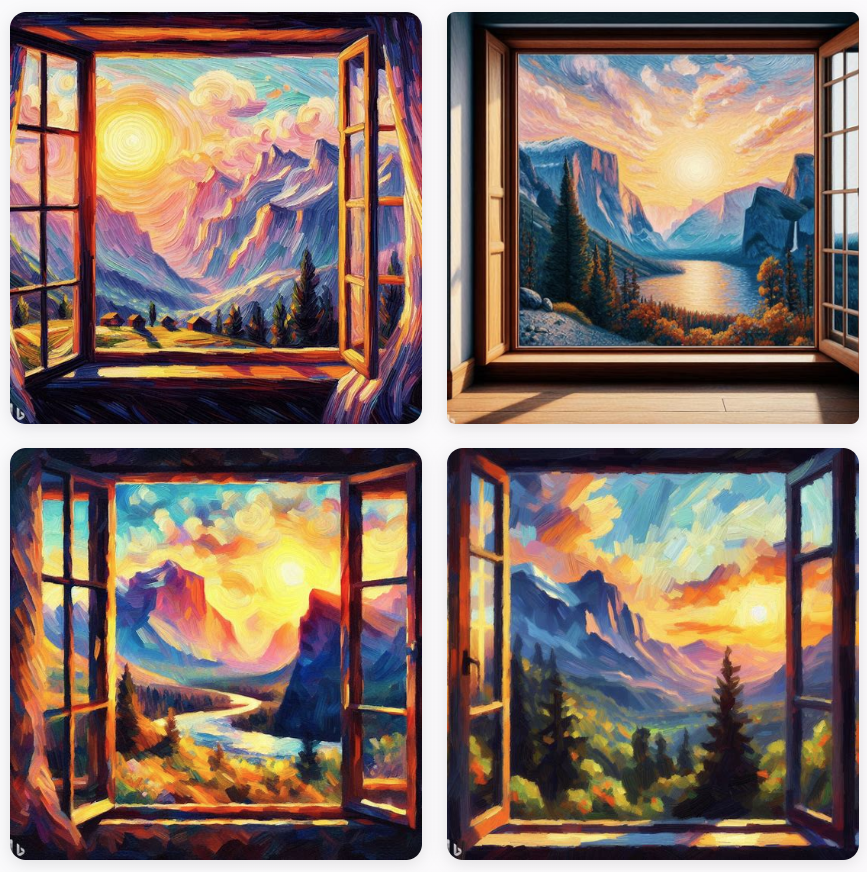
Neoclassical
Neoclassical refers to a broad movement in various forms of art and architecture that draw inspiration from the classical culture and styles of ancient Greece and Rome. In literature, it is associated with the 18th century age of enlightenment and includes writers such as Alexander Pope and Samuel Johnson. In music, the neoclassicism is a 20th century movement, represented by composers such as Igor Stravinsky and Paul Hindemith, who drew inspiration from the music of earlier periods. In economics, neoclassical theory refers to a school of thought that emphasizes the belief that consumers are rational individuals who make decisions based on maximizing utility, while producers aim to maximize profits.
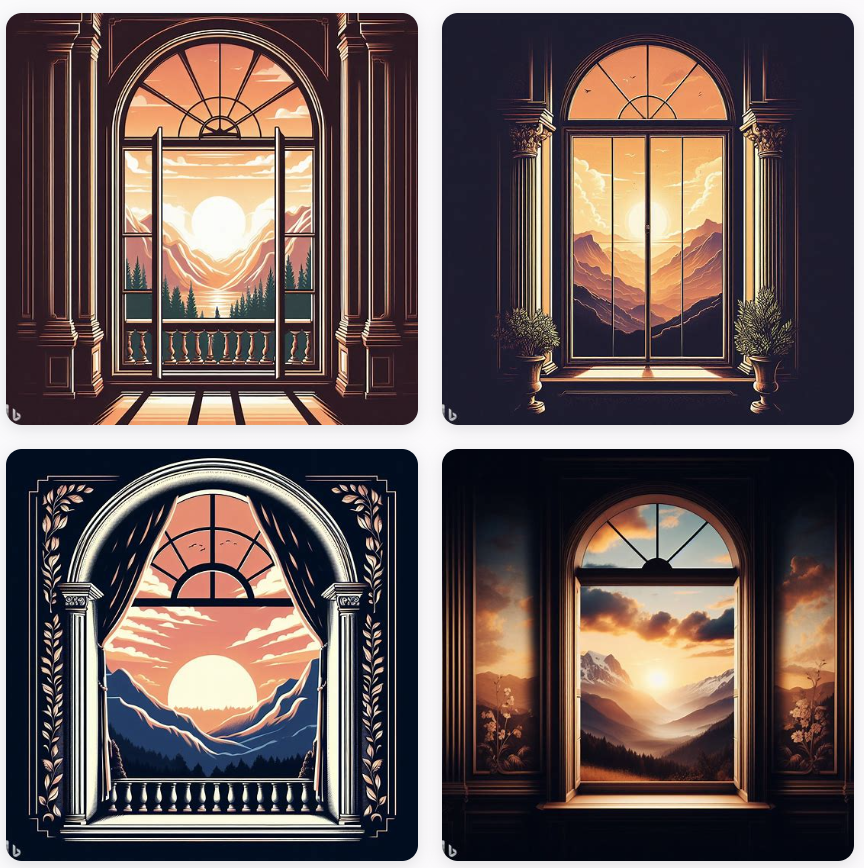
Orphism Art
Orphism art, also known as Orphic Cubism, is an offshoot of the Cubist art movement that was pioneered by artists Robert Delaunay and Sonia Delaunay around 1912. The term Orphism was coined by French poet Guillaume Apollinaire. Orphism art is characterized by its use of strong colors and geometric shapes. The movement was noted for its use of abstract, often geometric, representation and vibrant colors. Unlike Cubism, which was more focused on different perspectives, Orphism was more concerned with color harmonies and lyrical qualities. The movement was named after Orpheus, the musician and poet from ancient Greek mythology, symbolizing the artist's pursuit of pure abstraction and harmony. The Orphists believed that painting could be like music, and sought to create work that appealed to the senses in a similar way that music does.
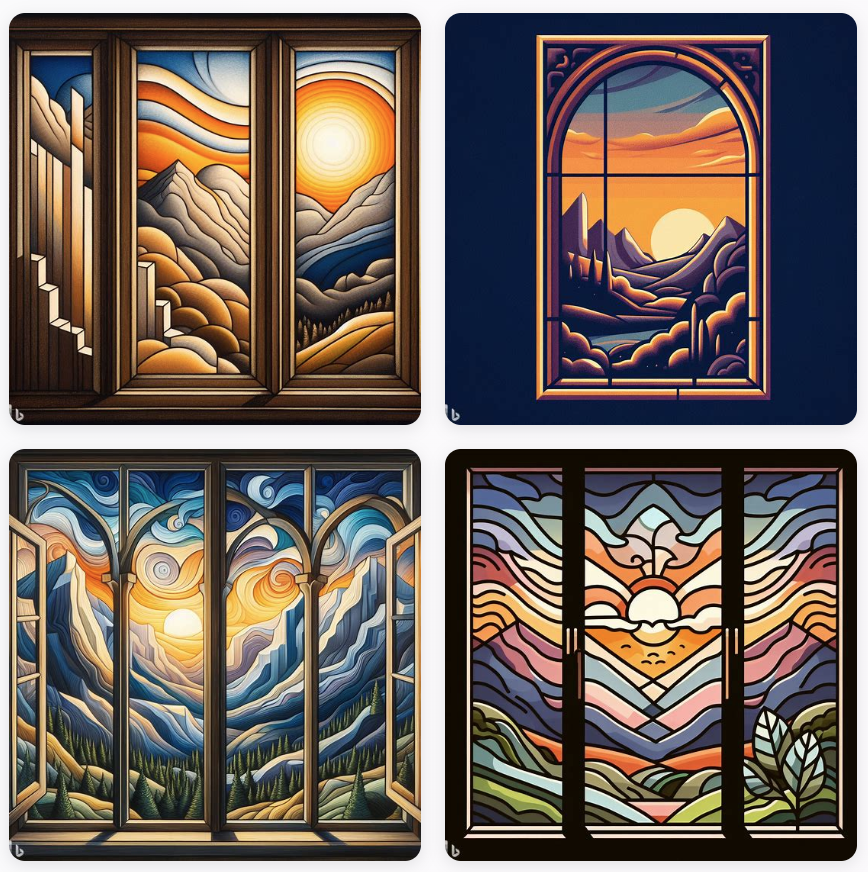
Ottoman Empire Sixteenth Century
The Ottoman Empire in the sixteenth century, also known as the era of transformation, was one of the most powerful states in the world. This period is often referred to as the "Golden Age" of the Ottoman Empire. It was during this time that the empire reached its peak in terms of territorial expansion and cultural production. The empire was ruled by a series of strong and capable sultans during this period, including Selim I and Suleiman the Magnificent. Under their leadership, the empire expanded significantly, conquering large parts of the Middle East, North Africa, and Southeast Europe. Suleiman the Magnificent, who reigned from 1520 to 1566, is often considered the greatest of the Ottoman sultans. His rule was marked by significant military victories, legal reform, and cultural advancements. He was known for his patronage of the arts, and under his rule, Istanbul became a major center of Renaissance art, literature, and architecture. The sixteenth century also saw the height of the Ottoman naval power, with the empire controlling key trade routes in the Mediterranean, Red Sea, and Persian Gulf. The empire's economy flourished, with trade and agriculture serving as the main sources of wealth. However, towards the end of the century, the empire began to face challenges. The long wars with the Habsburgs in Europe and the Safavids in Persia drained the empire's resources. Additionally, the death of Suleiman the Magnificent led to a period of less capable leadership, and the empire began to decline in the late sixteenth century. Despite these challenges, the sixteenth century is still considered the height of the Ottoman Empire's power and influence, with lasting impacts on the regions it controlled.
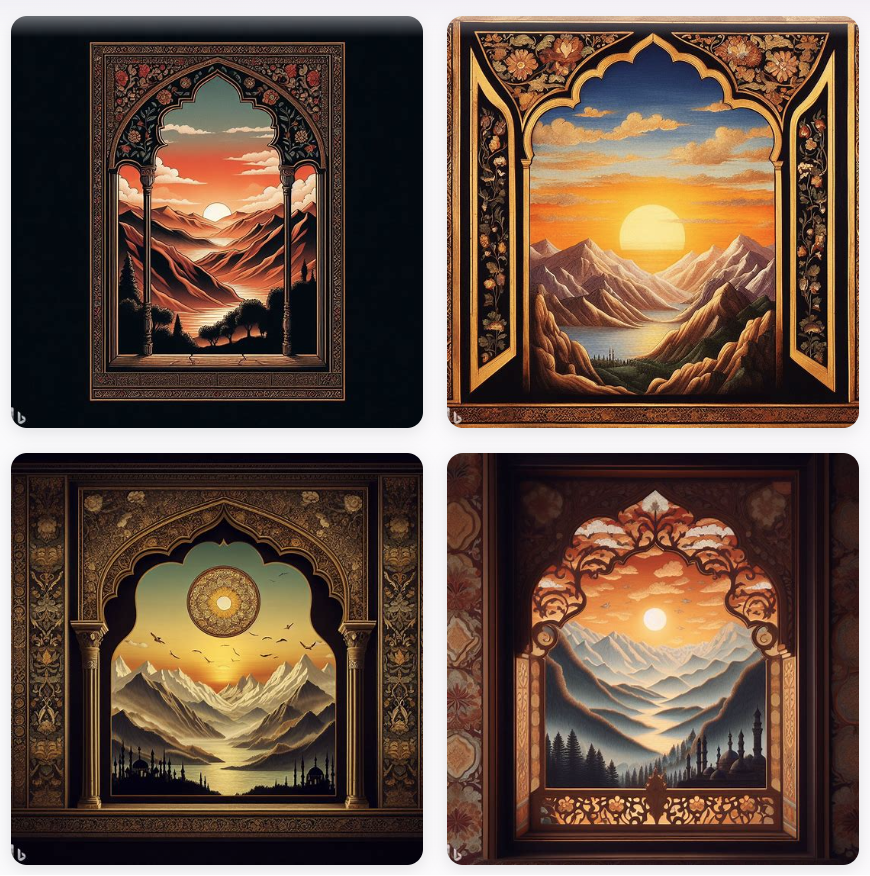
Pencil Art
Pencil art refers to the creation of art using a pencil as the primary medium. This can include sketching, drawing, shading, and other techniques. Pencil art can range from simple doodles to highly detailed and realistic pieces. It is often used in preliminary sketches for larger works, but can also be a finished art form in itself. The pencils used can vary in hardness and color, allowing for a wide range of effects and styles.
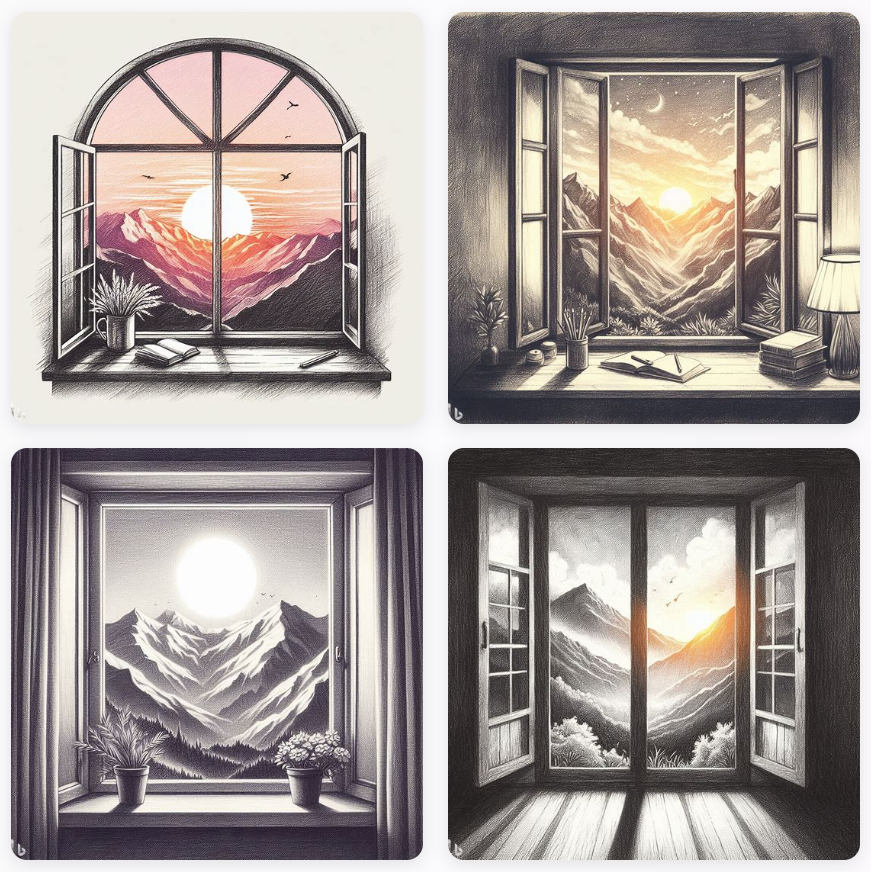
Persian Eleventh Century
The Persian eleventh century corresponds to the period from 1001 to 1100 in the Gregorian calendar. During this time, Persia (modern-day Iran) was under the rule of several dynasties including the Ghaznavids, the Seljuks, and the Khwarazmians. This period was marked by significant developments in various fields such as science, literature, philosophy, and art. The Persian polymath and philosopher, Avicenna (Ibn Sina), who is considered one of the most significant thinkers and writers of the Islamic Golden Age, lived during this century. His works, particularly "The Canon of Medicine" and "The Book of Healing," had a profound influence on the development of medicine and philosophy. The Seljuk Empire, which was one of the most powerful empires in the world during the 11th century, contributed to the spread of Persian language and culture across their territories. The Seljuks also played a crucial role in the revival of Sunni Islam and the decline of Shia Islam in Persia. In terms of architecture, the 11th century saw the construction of many mosques, madrasas (Islamic schools), and caravanserais (roadside inns). The distinctive Persian-Islamic architecture style, characterized by the use of intricate geometric designs and calligraphy, flourished during this period.
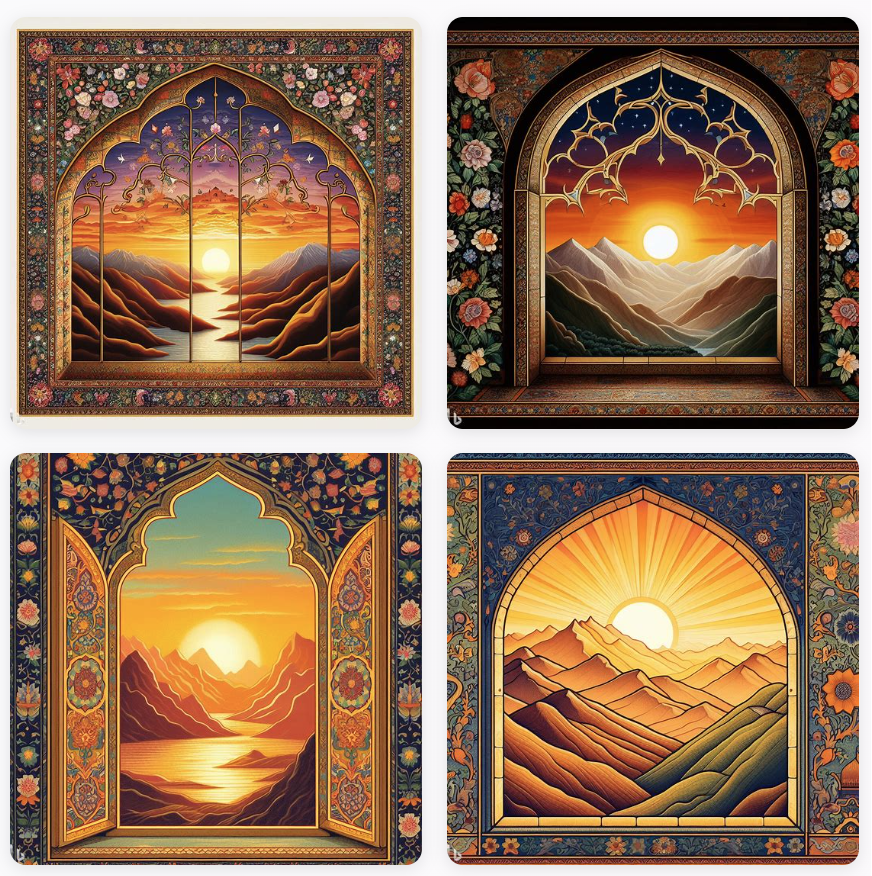
Photorealism
Photorealism is a genre of art in which a painting, drawing, or other graphic medium is so intricately detailed that it resembles a high-resolution photograph. It emerged in the late 1960s and early 1970s in the United States and Europe. Photorealistic artists often use photographs as their primary reference material, but their goal is not to simply reproduce the photograph, but to create the illusion of a new reality that appears to be a photographed version of the original subject.

Pixelated 3D
Pixelated 3D refers to a style of 3D modeling and rendering where the objects and environments are intentionally designed to look blocky or pixel-like. This is often used in video games and digital art to evoke a retro or nostalgic aesthetic, reminiscent of early computer graphics. Despite the simple appearance, creating pixelated 3D art can be a complex process involving 3D modeling, texturing, and lighting.
![]()
Pop Art
Pop art is an art movement that emerged in the United Kingdom and the United States during the mid- to late-1950s. The movement presented a challenge to traditions of fine art by including imagery from popular and mass culture, such as advertising, comic books, and mundane cultural objects. One of its aims is to use images of popular (as opposed to elitist) culture in art, emphasizing the banal or kitschy elements of any culture, most often through the use of irony. It is also associated with the artists' use of mechanical means of reproduction or rendering techniques. Some of the most famous pop artists include Andy Warhol, Roy Lichtenstein, and Richard Hamilton.
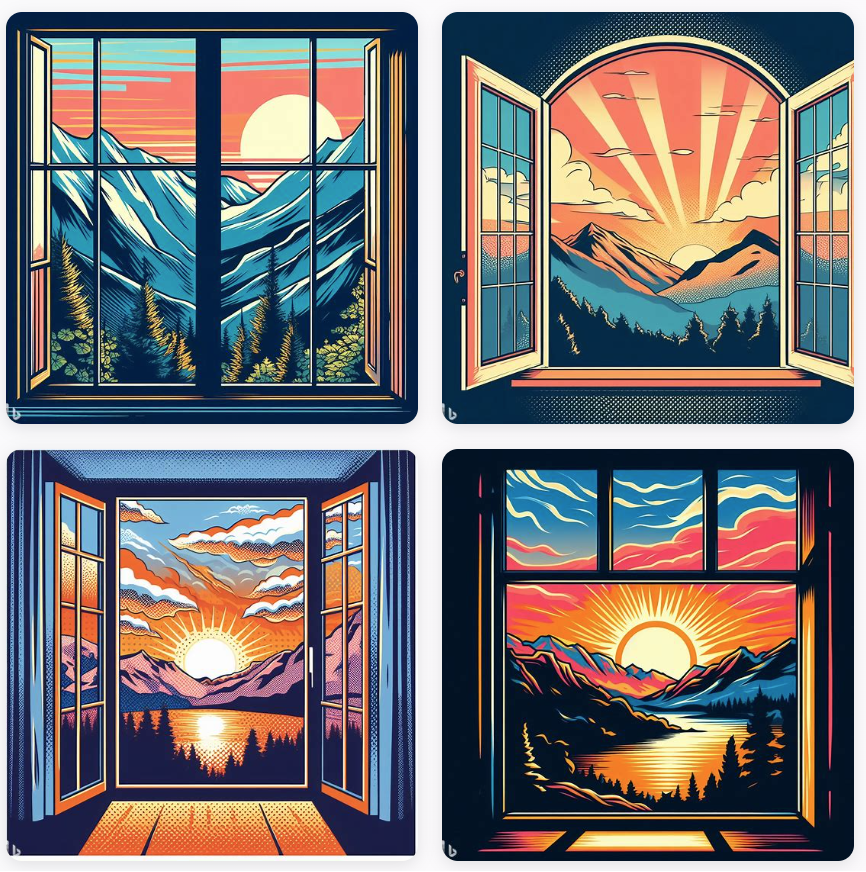
Post Impressionism
Post-Impressionism is an art movement that emerged in the late 19th and early 20th centuries as a reaction against Impressionism. It was led by artists like Vincent van Gogh, Paul Cézanne, Paul Gauguin, and Georges Seurat. While the Impressionists sought to capture the naturalistic effects of light and color in their work, Post-Impressionists pushed the boundaries of color and form to express their subjective emotions and symbolic meanings. They used vivid and often unnatural colors, distinctive brushstrokes, and real-life subject matter, but were more inclined to emphasize geometric forms, distort form for expressive effect, and use unnatural or arbitrary color. The term "Post-Impressionism" was coined by the British artist and art critic Roger Fry in 1906. Despite the diversity of styles and techniques within the movement, Post-Impressionism has had a significant impact on the development of modern art.
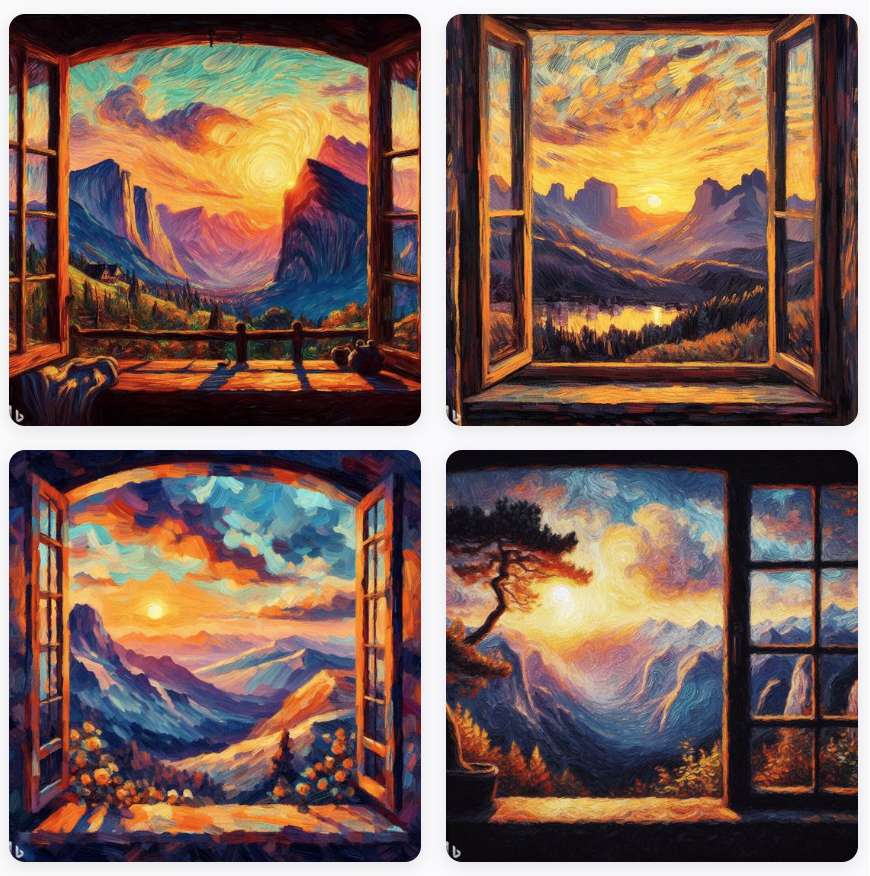
Post Modern
Postmodernism is a broad movement that developed in the mid- to late 20th century across philosophy, the arts, architecture, and criticism, marking a departure from modernism. It is generally defined by an attitude of skepticism, irony, or rejection toward grand narratives, ideologies, and various tenets of universalism, including objective notions of reason, human nature, social progress, moral universalism, absolute truth, and objective reality. Instead, it asserts that knowledge and truth are products of social, historical, and political interpretations, and are therefore contextual and constructed. In art and architecture, it is characterized by the use of unconventional and experimental designs, often blending different styles and forms.

Precisionism
Precisionism, also known as Cubist Realism, is an artistic movement that emerged in the United States after World War I. It is characterized by the depiction of industrial and urban landscapes with a high level of detail and a sense of order and clarity. The style is often associated with the works of artists such as Charles Sheeler, Charles Demuth, and Ralston Crawford. Precisionism rejected the romantic and emotional elements of expressionism and instead focused on the precise and accurate representation of modern life.

Purism
Purism is a movement in art and architecture that aims to strip down designs to their most basic, fundamental aspects, removing any unnecessary elements or decorations. This style emphasizes simplicity, functionality, and purity of form. It emerged in the early 20th century, with notable proponents including architects Le Corbusier and Amédée Ozenfant. In technology, Purism also refers to a company that designs and produces privacy-focused laptops and mobile phones.
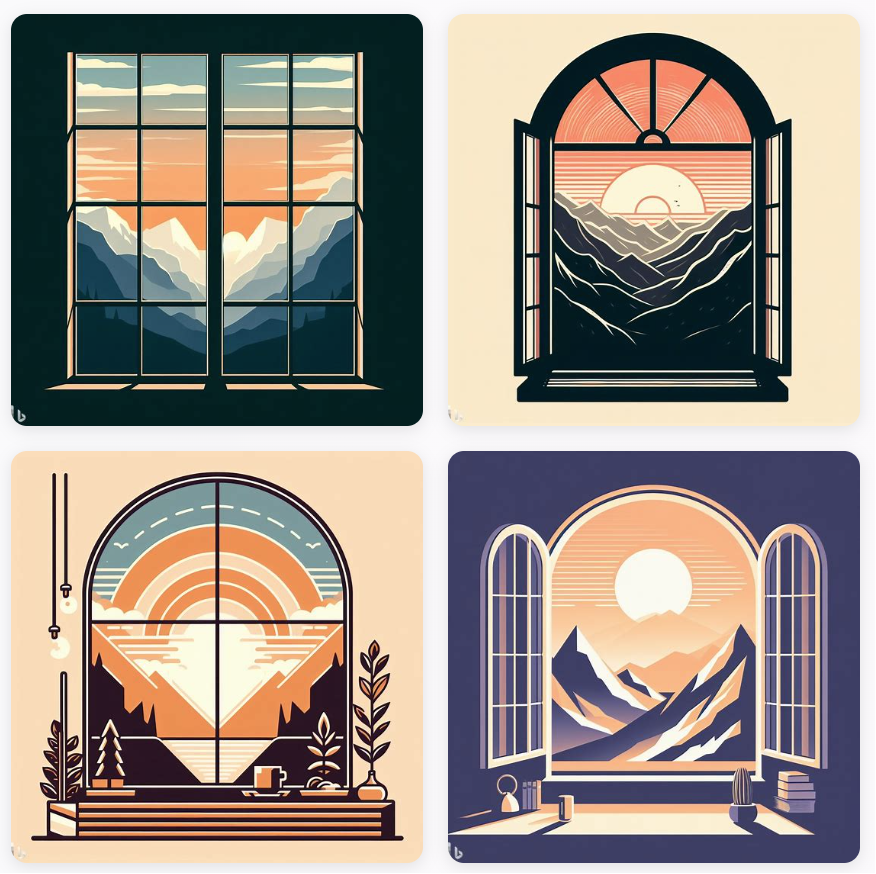
Realism
Realism is an artistic or literary movement that emphasizes the depiction of life as it is lived, without idealization or romantic coloration. It is a representation of reality, focusing on details, and often highlighting the harsh or sordid aspects of life. In philosophy, realism refers to the belief that reality exists independently of observers or their perceptions. In international relations, realism is a theory that emphasizes the competitive and conflictual side of international relations.

Reneissance
The Renaissance was a period in European history from the 14th to the 17th century, considered the bridge between the Middle Ages and modern history. It started as a cultural movement in Italy in the Late Medieval period and later spread to the rest of Europe. The Renaissance is most known for its artistic developments and the contributions of such polymaths as Leonardo da Vinci and Michelangelo, who inspired the term "Renaissance man". It also saw a great expansion of geographical exploration and a significant growth of literature, philosophy, and science.
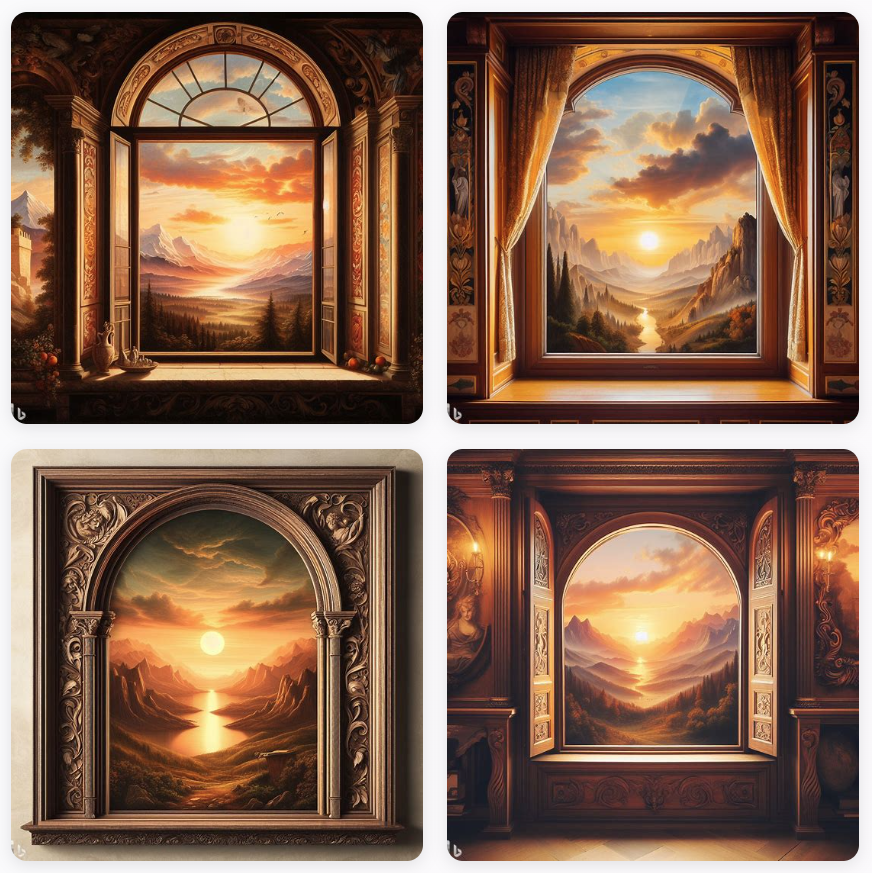
Rococo
Rococo is an artistic style that originated in France in the early 18th century, following the Baroque period. It is characterized by ornate detail, lightness, elegance, and an exuberant use of curving, natural forms in ornamentation. The term is also used to denote similar stylistic elements in music, literature, and architecture. Rococo is often associated with the reign of Louis XV and the beginning of the reign of Louis XVI. It is known for its playful, whimsical themes and focus on the pleasures of the aristocracy.
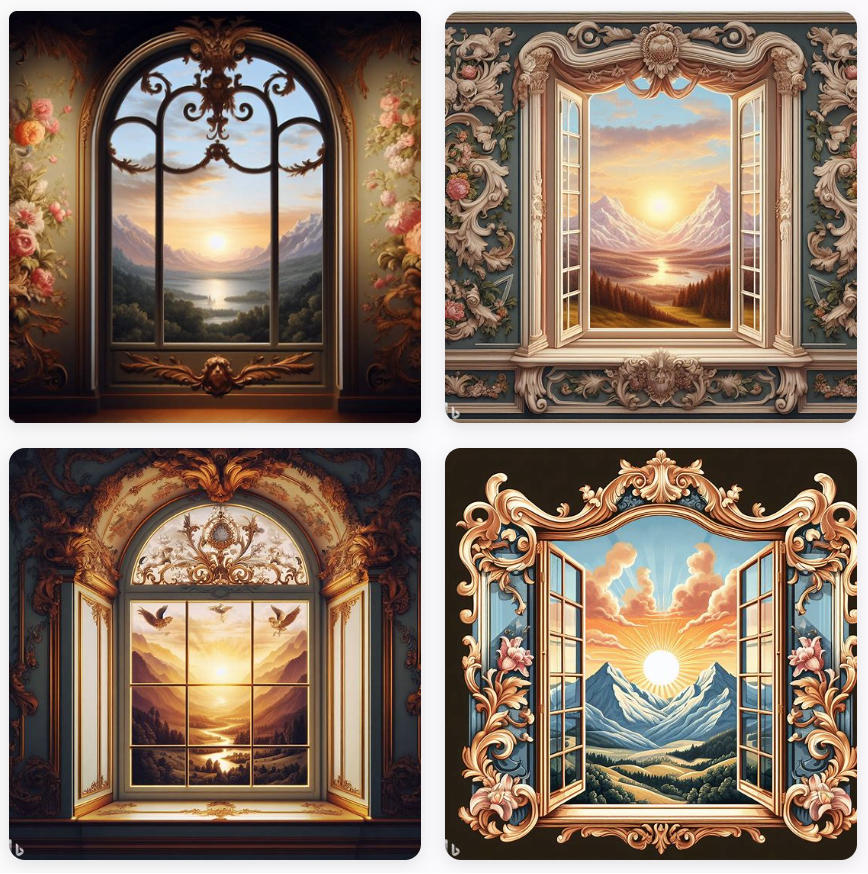
Romanticism
Romanticism was an artistic, literary, musical, and intellectual movement that originated in Europe towards the end of the 18th century, and in most areas was at its peak in the approximate period from 1800 to 1850. It was characterized by its emphasis on emotion and individualism, glorification of all the past and nature, and preference for the medieval rather than the classical. It was partly a reaction to the Industrial Revolution and the scientific rationalization of nature. Key figures in the Romantic movement include poets like William Wordsworth, Samuel Taylor Coleridge, and Lord Byron, and artists like J.M.W. Turner and Caspar David Friedrich.
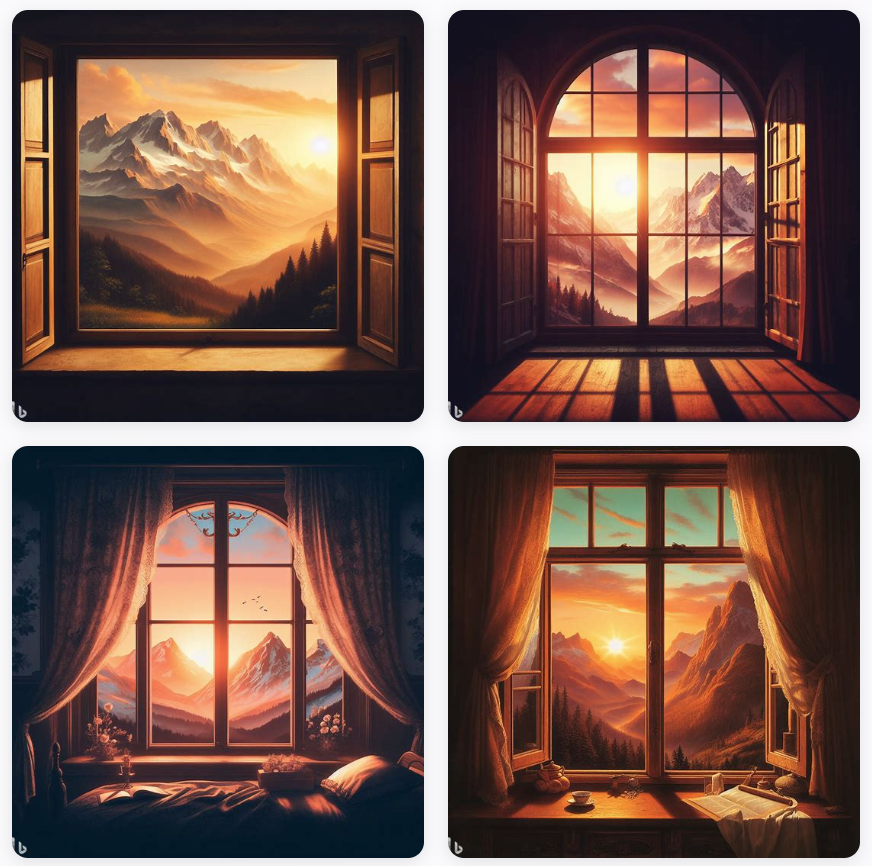
Socialist Realism
Socialist realism is a style of idealized realistic art that was developed in the Soviet Union and was the official style in that country between 1932 and 1988, as well as in other socialist countries after World War II. It is characterized by the glorified depiction of communist values, such as the emancipation of the proletariat, by means of realistic imagery. The purpose of socialist realism was to elevate the common worker, whether factory or agricultural, by presenting his life, work, and recreation as admirable. In other words, it was meant to educate the people in the goals and meaning of communism.
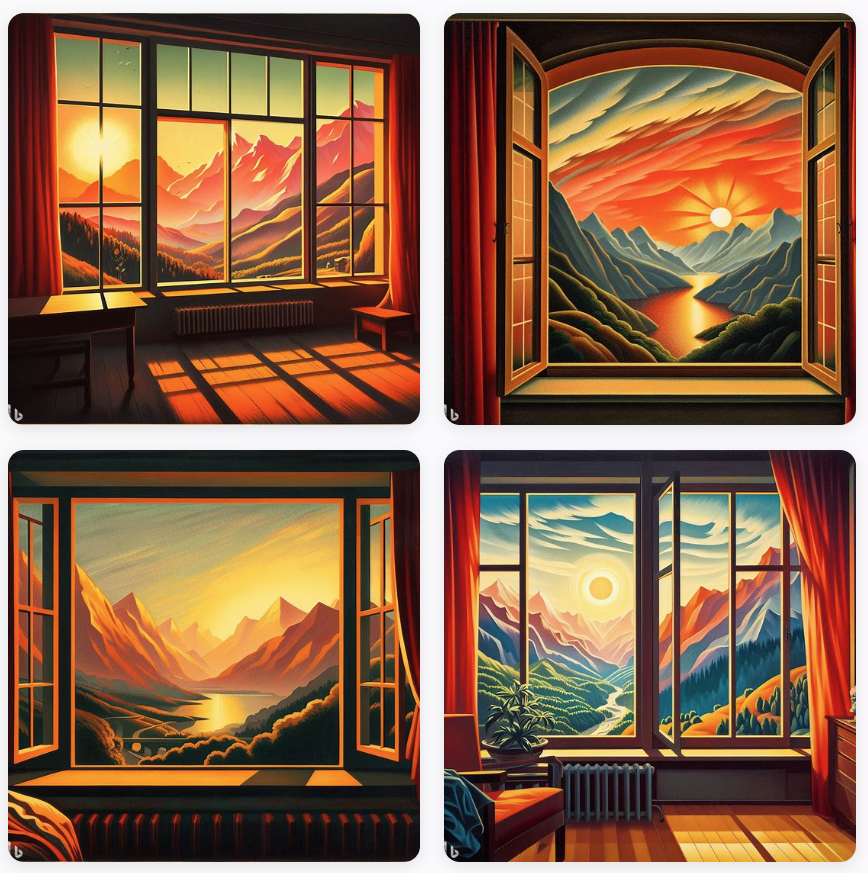
Steampunk
Steampunk is a subgenre of science fiction that incorporates technology and aesthetic designs inspired by 19th-century industrial steam-powered machinery. It is often set in an alternative history of the 19th century's British Victorian era or American "Wild West", in a post-apocalyptic future during which steam power has maintained mainstream usage, or in a fantasy world that similarly employs steam power. Steampunk may also incorporate additional elements from the genres of fantasy, horror, historical fiction, alternate history, or other branches of speculative fiction. The term steampunk's first known appearance was in 1987, but it now retroactively refers to many works of fiction created as far back as the 1950s or 1960s. Steampunk also refers to any of the artistic styles, clothing fashions, or subcultures that have developed from the aesthetics of steampunk fiction, Victorian-era fiction, art nouveau design, and films from the mid-20th century. Various modern utilitarian objects have been modded by individual artisans into a pseudo-Victorian mechanical "steampunk" style, and a number of visual and musical artists have been described as steampunk.
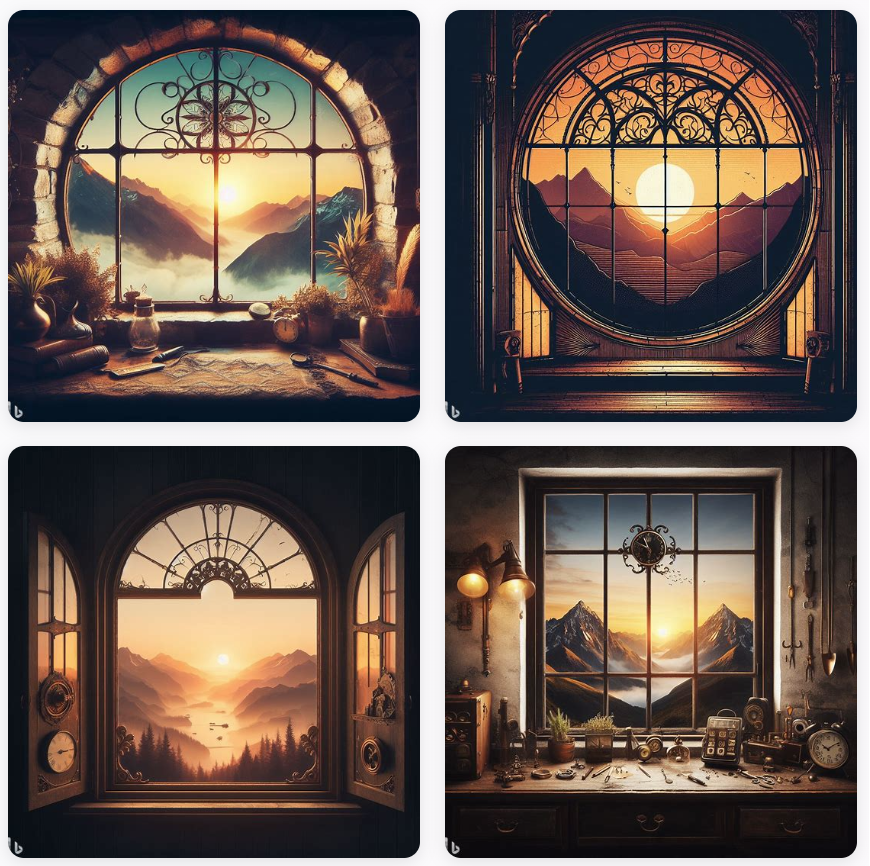
Street Art
Street art is a form of visual art created in public locations, usually unsanctioned artwork executed outside of the context of traditional art venues. It often conveys social messages and includes various mediums such as graffiti, stencil graffiti, sticker art, wheatpasting and street poster art, video projection, art intervention, guerrilla art, flash mobbing, and street installations. Street artists often travel between countries to spread their designs and some have even gained international recognition for their work.
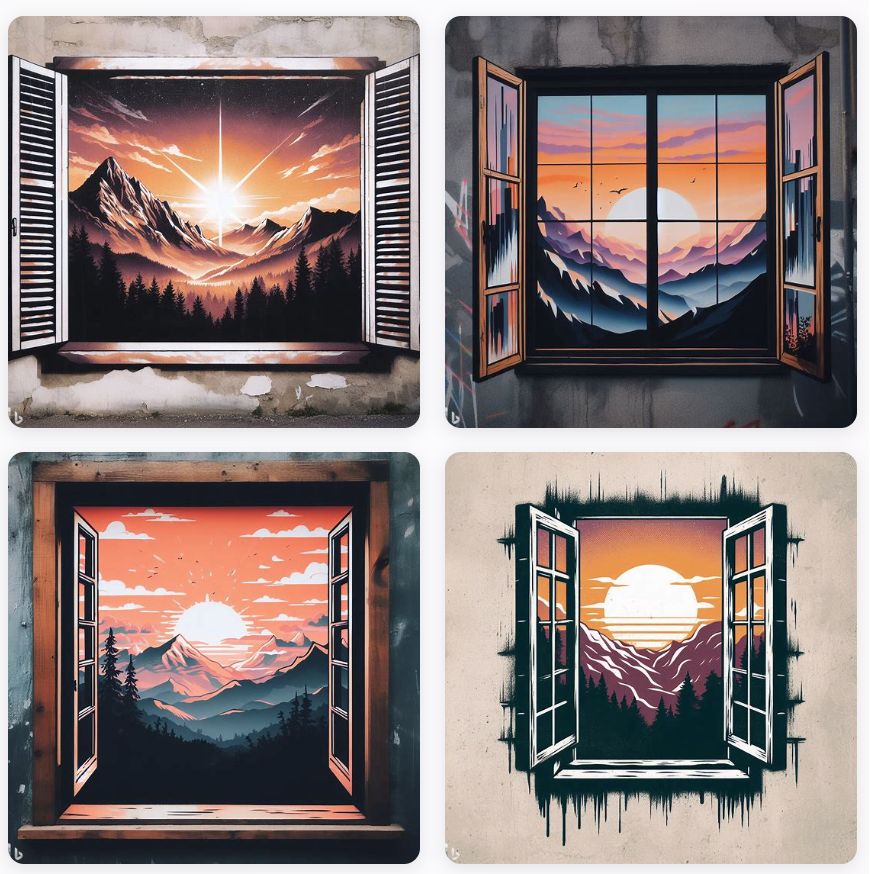
Superrealism
Superrealism, also known as photorealism or hyperrealism, is a genre in art that seeks to create artwork that resembles high-resolution photography. This genre of art incorporates a lot of detail, precision, and technique to create images that look as realistic and detailed as possible. It often involves the use of photographic images as a reference to ensure the accurate depiction of light, texture, and color in the artwork.
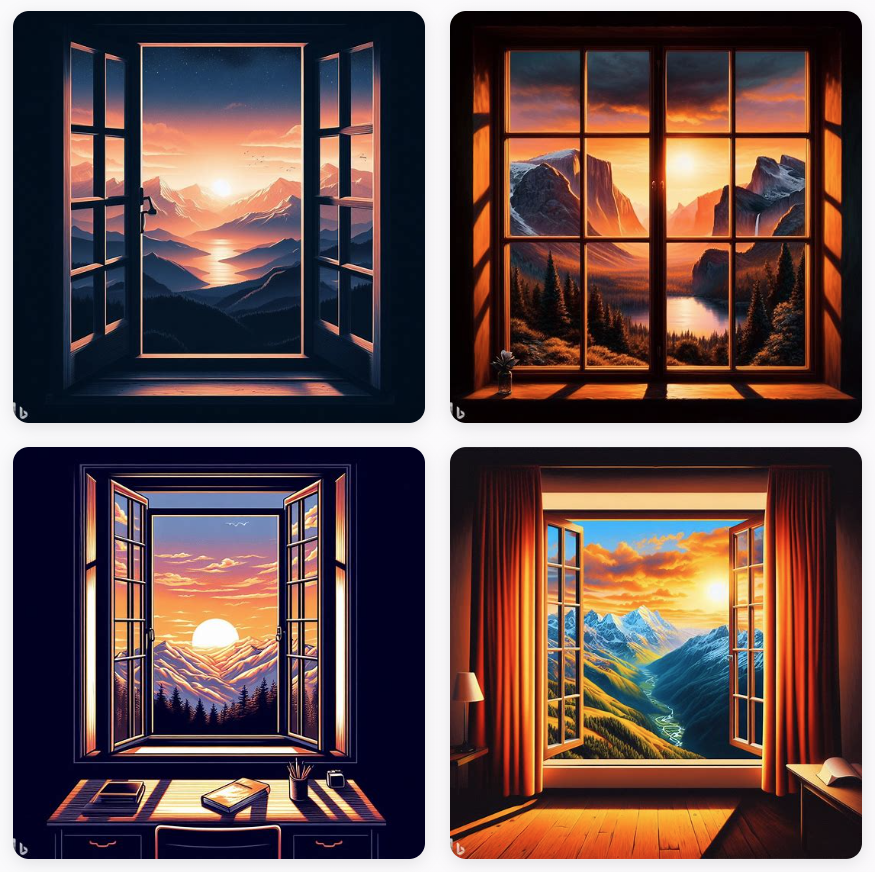
Suprematism
Suprematism is an art movement focused on fundamental geometric forms (in particular the square and circle) which originated in Russia around 1913. It was founded by Kazimir Malevich, who believed in the supremacy of pure artistic feeling rather than the depiction of objects. Suprematism is considered one of the precursors of abstract art.
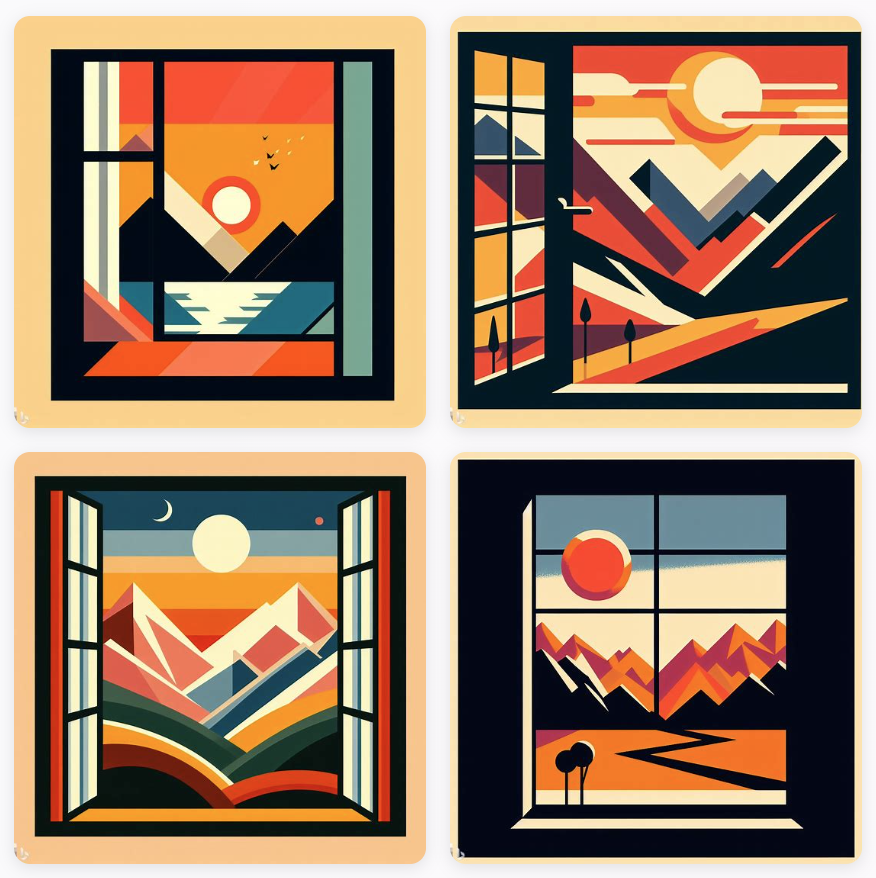
Surrealism
Surrealism is an artistic and literary movement that began in the early 1920s. It is characterized by the exploration of the subconscious mind, dreamlike scenarios, and the use of irrational, illogical, or nonsensical elements. Surrealism seeks to challenge the boundaries of reality, often blurring the line between the real and the imaginary. Notable surrealists include Salvador Dalí, René Magritte, and André Breton, who is considered the founder of the movement.
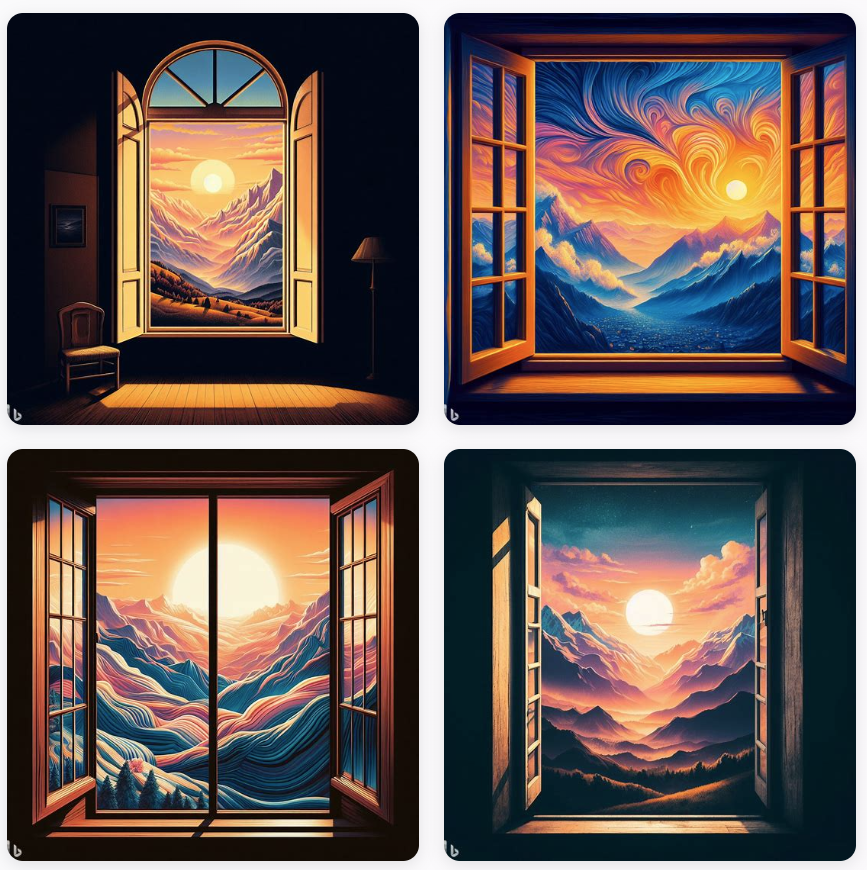
Symbolism
Symbolism is a literary device that uses symbols, be they words, people, marks, locations, or abstract ideas to represent something beyond the literal meaning. The symbols can have both tangible and intangible meanings and are often used to convey complex ideas or themes. For example, a dove is often used to symbolize peace, and a red rose or heart symbolizes love. Symbolism can be found in literature, art, religion, and everyday life.
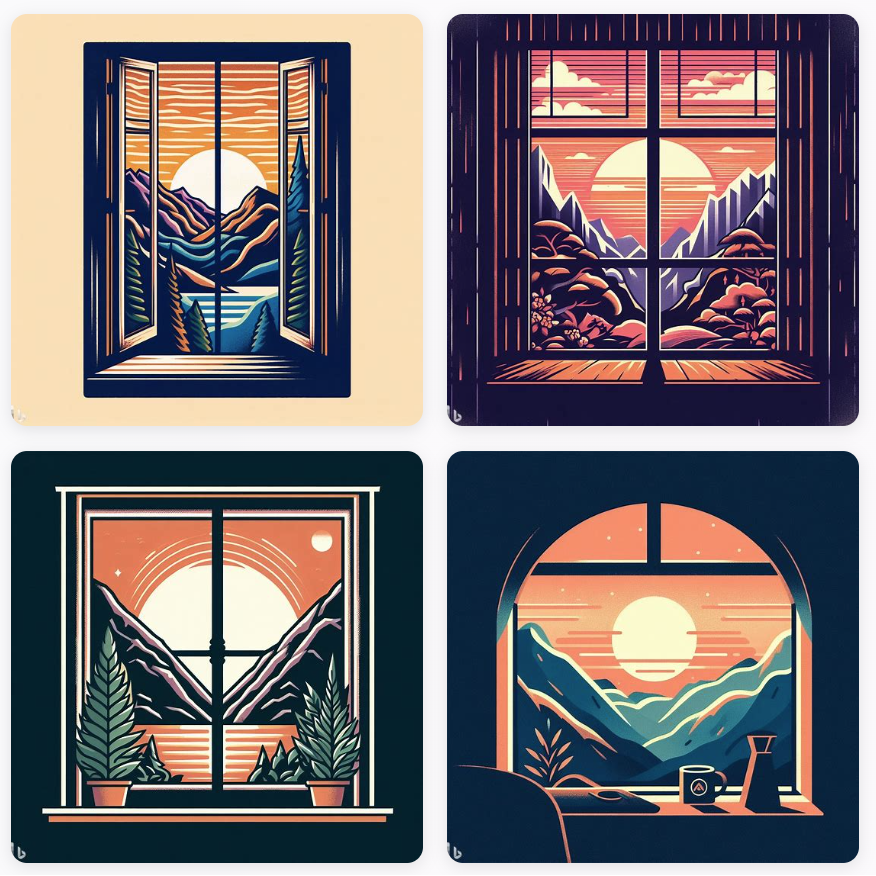
Synthwave
Synthwave, also known as retrowave or outrun, is a genre of electronic music influenced by 1980s film soundtracks, video games, and pop culture. It is characterized by its use of synthesizers, drum machines, and sequencers, often with a futuristic or science fiction theme. The genre emerged in the mid-2000s and gained popularity in the 2010s, particularly through its association with retro aesthetics and internet culture.

Tarot
Tarot is a deck of 78 cards that are used for divination, meditation, and self-reflection. The deck is divided into two sections: the Major Arcana (22 cards) and the Minor Arcana (56 cards). Each card has a unique image and meaning. The Major Arcana cards represent significant life events or stages, while the Minor Arcana cards represent day-to-day life and its ups and downs. Tarot readings involve a reader who interprets the cards that are chosen by the person receiving the reading. The arrangement of the cards (known as a spread) can also influence their meaning.
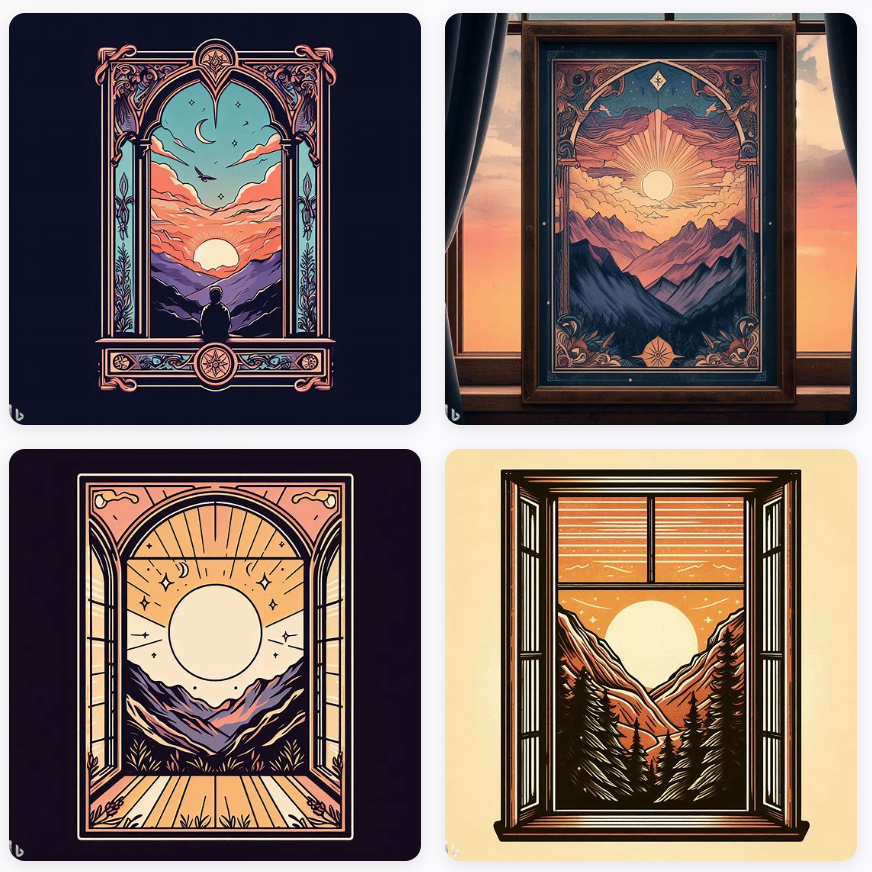
Tattoo
A tattoo is a form of body modification where a design is made by inserting ink, dyes, and/or pigments, either indelible or temporary, into the dermis layer of the skin to change the pigment. The art of making tattoos is tattooing. Tattoos can be purely decorative, symbolic, or related to personal beliefs. They can also serve as a form of identification or medical purposes.
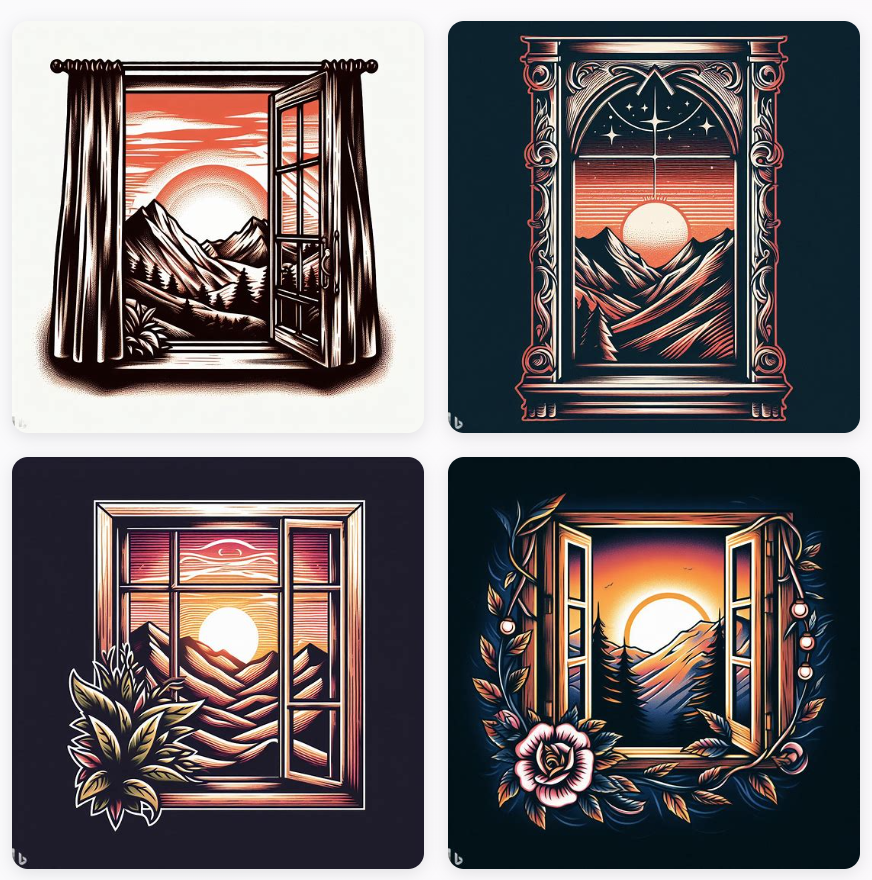
Techno
Techno is a genre of electronic dance music that originated in Detroit, Michigan, in the United States during the mid-to-late 1980s. The first recorded use of the word techno in reference to a specific genre of music was in 1988. It is characterized by a repetitive four on the floor beat which is generally produced by a synthesizer or drum machine. Techno is often instrumental, and has a futuristic, industrial or machine-like sound. It has been influential on many other genres of music and has a large global following.
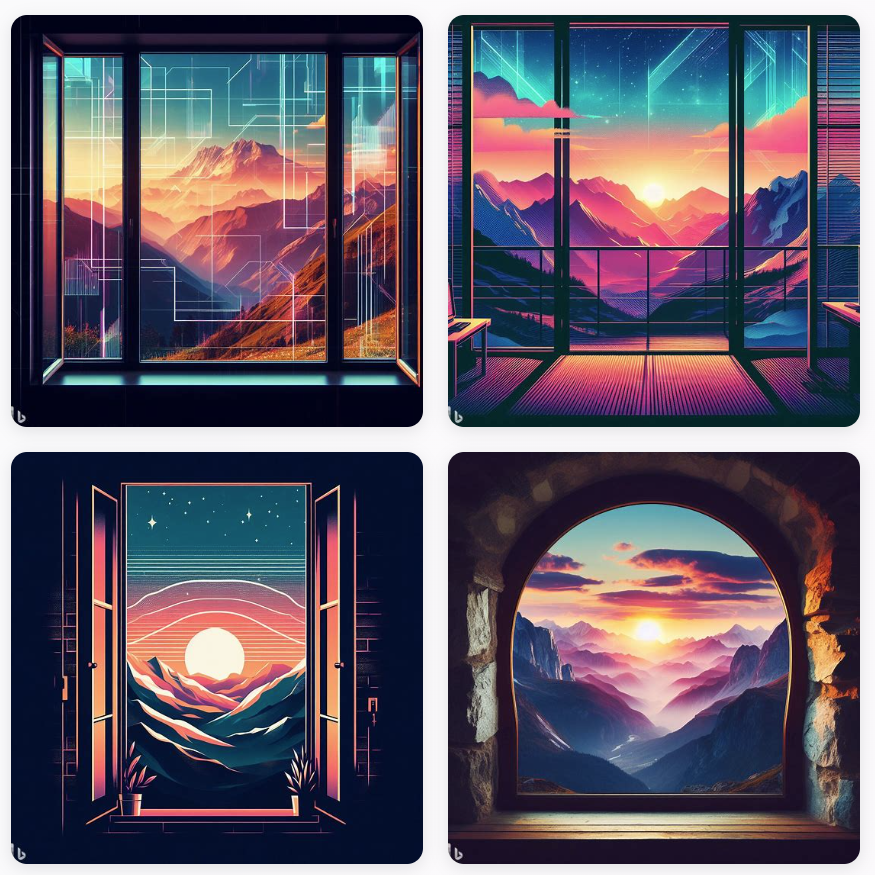
Ukiyo E
Ukiyo-e, which translates to "pictures of the floating world," is a genre of Japanese art that was popular from the 17th through 19th centuries. It includes paintings, but is best known for woodblock prints. Ukiyo-e art often depicted scenes from history, the theater, and the pleasure districts, including courtesans, kabuki actors, and sumo wrestlers, as well as landscapes and scenes of daily life. Some of the most famous ukiyo-e artists include Hokusai, who created "The Great Wave off Kanagawa," and Hiroshige, known for "The Fifty-Three Stations of the Tōkaidō."
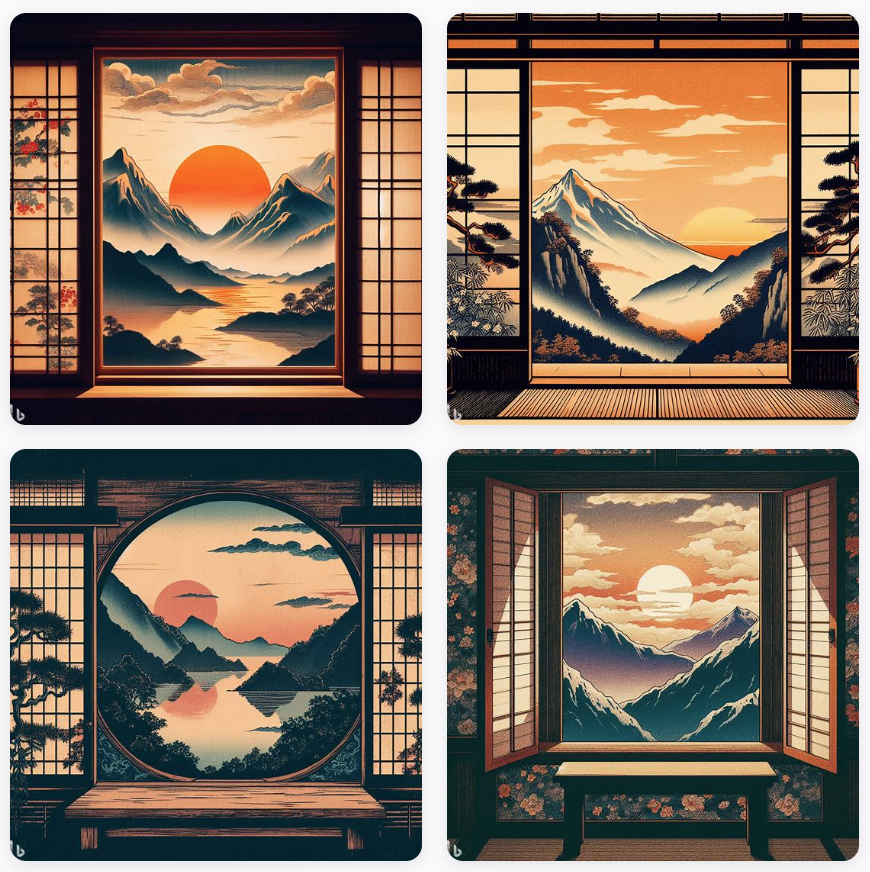
Vaudeville
Vaudeville was a type of entertainment popular in the United States and Canada from the early 1880s until the early 1930s. It was a variety show that included musicians, comedians, acrobats, trained animals, dancers, magicians, ventriloquists, and more. Each performance was made up of a series of separate, unrelated acts grouped together on a common bill. Vaudeville was especially popular in cities and was considered a form of mass entertainment for people from all social classes. It was eventually replaced by film, radio, and television.

Victorian England
Victorian England refers to the period of British history during the reign of Queen Victoria from 1837 to 1901. This era was characterized by significant changes and developments in nearly every aspect of society. In terms of politics, the Victorian era saw the expansion of the British Empire, making it the most powerful global empire during this time. It was also a period of significant political reform, with the introduction of new laws and policies that expanded voting rights, improved social conditions, and promoted public education. The Victorian era was also a time of great cultural and intellectual activity. Literature, art, and science flourished during this time, with notable figures such as Charles Dickens, the Bronte sisters, Thomas Hardy, Charles Darwin, and many others making significant contributions to their respective fields. The Industrial Revolution, which had begun in the late 18th century, continued to transform the economy and society. This led to rapid urbanization, with many people moving to cities to work in factories. However, this also led to overcrowded living conditions, pollution, and other social problems. Socially, the Victorian era was characterized by strict moral standards and codes of conduct. The family was considered the cornerstone of society, and women were expected to focus on domestic duties and raising children. However, the latter part of the era saw the beginnings of the women's suffrage movement. Despite the progress and prosperity of the Victorian era, it was also a time of great inequality and social unrest. The gap between the rich and the poor was vast, and there were frequent protests and strikes by workers demanding better conditions and rights. Overall, the Victorian era was a time of great change and contradiction, marked by progress and innovation as well as social and economic inequality.
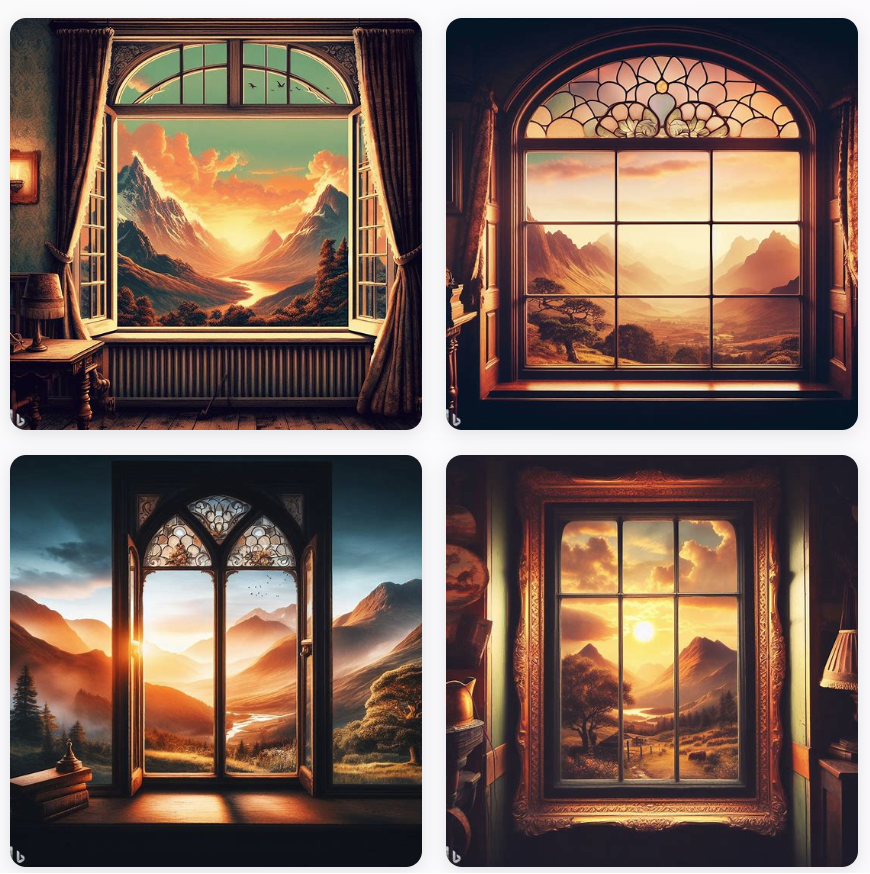
Ziggurat
A ziggurat is a type of massive structure built in ancient Mesopotamia and western Iran. It has the form of a terraced compound of successively receding stories or levels. Notable ziggurats include the Great Ziggurat of Ur near Nasiriyah, Iraq; the Ziggurat of Aqar Quf near Baghdad, Iraq; the now destroyed Etemenanki in Babylon; Chogha Zanbil in Khūzestān, Iran; and Sialk near Kashan, Iran.
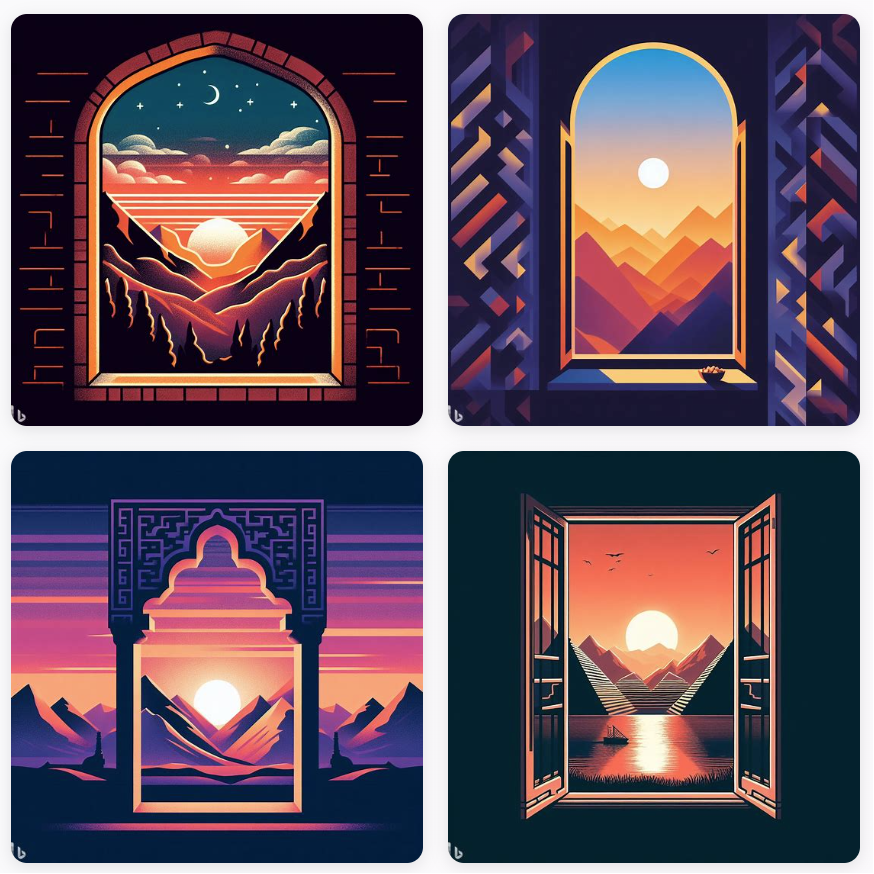
I find this a very easy and convenient way to learn a bit about the different artistic styles: having the same image depicted differently allows a quick comparison. Not quite an art course, but a nice introduction, to be followed by proper, human-written, art books!